Croatians on Titanic: A Look Back on the 109th Anniversary
April 15, 2021 - A look back at Croatians on Titanic following the 109th anniversary of the tragic event.
109 years ago, the Titanic sank, taking at least 1,500 lives to the bottom of the Atlantic. That was the very first voyage of the technological wonder of ship-building expertise of its time. The number of fatalities includes both the crew members and passengers. Approximately 1,317 passengers were on board, and the majority was assigned the third class, reserved for the poor, bottom social class. The Titanic was traveling to the USA from the UK, and many of the passengers climbed aboard, hoping to be greeted to a better life in the States. Given the historical circumstances and social and political turbulence which troubled the Austrian-Hungarian Empire, which Croatia was part of in 1912, it's no wonder there were Croats on board as well. Thirty passengers were Croatian (actually thirty-one, but one is was registered in Hungary), and only three of them survived.
In honour of the fallen victims of the Titanic, the country has a Titanic Memorial House in the village of Bratina, around 45 minutes drive from Zagreb, towards Karlovac. This discrete historical memory which is also an unpromoted but potential huge tourist spot caught the attention of a journalist Petra Balija from Večernji List in 2018. She visited the house and got in touch with one of the founders of the memorial house as well as the Titanic 100 Association founded in Bartina in 2012 (on a 100th year anniversary no less) because of the historical connection the place shares with this iconic and tragic ship.
The surname Turčin is a well-renowned name in Bratine, and Stjepan Turčin one of the thirty passengers and sadly one of the casualties of the shipwreck.
„It was exactly him, a hundred years since the sinking, who inspired the residents of Bratina to come up with an exhibition in his honour. Until 2021, his fellow citizens were not introduced to the fact someone from their area died on a big ship“, says the article on Večernji.
One of the founders of the association Andrea Žunec was connected by accident while searching the Internet and coming across the passenger's name list. This lead to Žunec contacting perhaps the biggest expert on Titanic in Croatia and the author of several books on the subject who also joined the association, Slobodan Novković, and soon, the one-time exhibition became the regular feature of the village. The association, back in 2018, counted over 180 members from over 54 different countries, and the exhibition hosts replicas of various items from the Titanic-both from reality and from a movie by James Cameron.
„We have the original piece of coal from the Titanic that dropped from the ship when it sunk. I got it from a Swiss acquaintance“, told Novković to Večernji List.
This year, marking the upper mentioned 109 anniversary, Renata Rašović, again for Večernji List, tracked the experiences of the surviving Croats which they described to various world press shortly after the shipwreck.
One of them was Ivan Jalševac, who was 29 at the time, and he told the journalists that were interviewing him how he was awakened by the event.
„At first, I had no idea what happened. I dressed up peacefully and lit up a cigarette. I'm telling you honestly, I wasn't afraid. On the deck, I saw panic and chaos. I returned back to the cabin to grab my suitcase but it was too late. Everything was flooded with water. I saw this is not a joke and that the ship needs to be abandoned as soon as possible. I thought in the worst case, I will jump in the sea and swim to a boat“, quoted Večernji List.
Jalševac managed to get to the lifeboat and he saw the ship sinking and vertically rising up before he heard three explosions.
„ I saw bodies of people that didn't manage to rescue themselves flying in the air. We stayed in the boat, scared and tired. Women were quiet as if they are mute. Understandable, their husbands stayed on the Titanic, they encountered gruesome death“, said Jalševac.
Večernji goes on to remind that while Croatians were only passengers on the Titanic, the stunning number of 56 Croatians From Istria and the Croatian coast were crew members of Carpathia, which saved 716 shipwreckers.
All Croatian passengers on the Titanic were traveling third class. Just like Andrea Žunec, you can track them down as well on the Titanic passenger list. Keep in mind someone is more difficult to find given they were signed under other countries, such as Hungary, which was the case for Mara Osman Banski. You can learn more about Croatians' faith on the Titanic in one of our previous articles on TCN.
The full names of Croatians on Titanic, separated by survival status on the dreadful night of April 15, 1912, and place go as follows:
Survived:
Topolovo: Ivan Jalševac
Vagovina: Mara Osman Banski
Died:
Brezik: Jego Grga Čačić, Luka Čačić, Marija Čačić, Jovo Čalić, Petar Čalić
Kričina: Bartol Cor, Ivan Cor, Liudevit (Ljudevit) Cor
Kula: Manda Čačić
Lipova Glavica: Jesa Ćulumović
Podgori: Mirko Dika
Ostrovica: Jovan Dimić
Hrastelnica: Jozef Draženovic
Vagovina: Ignjac Hendeković, Štefo Pavlović, Matilda Petranec
Topolovac: Ivan Jalševac
Bukovac: Mate Pocruic, Tome Pocruic
Písac, Peru : Jakob Mile Smiljanović
Galdovo: Ivan Stanković,
Široka Kula: Ivan Strilić
Bratina: Stjepan Turčin
Konjsko Brdo: Nikola Lulić, Luka Orešković, Marija Orešković, Jelka Orešković (from Konjsko Brdo),
Learn more about modern Croatian history on our TC page.
For more about news from Croatia, follow TCN's dedicated page.
Varazdin Old Town Nominated For Croatia's Second European Heritage Label
January 11, 2021 – Comparable to UNESCO's World Heritage List, the European Heritage Label is given to sites that have played a significant in the history, culture and values of Europe. If successful, Varazdin Old Town will be only the second site in Croatia to receive the classification
They say that Northern Croatia has more castles, fortresses and stately homes than any other region in the country. And they are probably right. Not that the names and locations of all are widely known either in the country, and certainly not outside. Truth be told, some of the structures included on Northern Croatia's list of important buildings have lain derelict for centuries. In others, the decline has been more recent. The best way to preserve such buildings seems to come from reimagining them for contemporary use, rather than simply preserving them in aspic or amber.
That is something that Varazdin Old Town does extremely well. All of Northern Croatia's famous castles do this well - Čakovec castle, Trakošćan, Veliki Tabor and Gornja Stubica. It's the reason they are famous. By opening up their doors as museums and event spaces, they attract hundreds of thousands of visitors each year and they get to tell their stories. And the story of Varazdin Old Town makes it perfect for the European Heritage Label.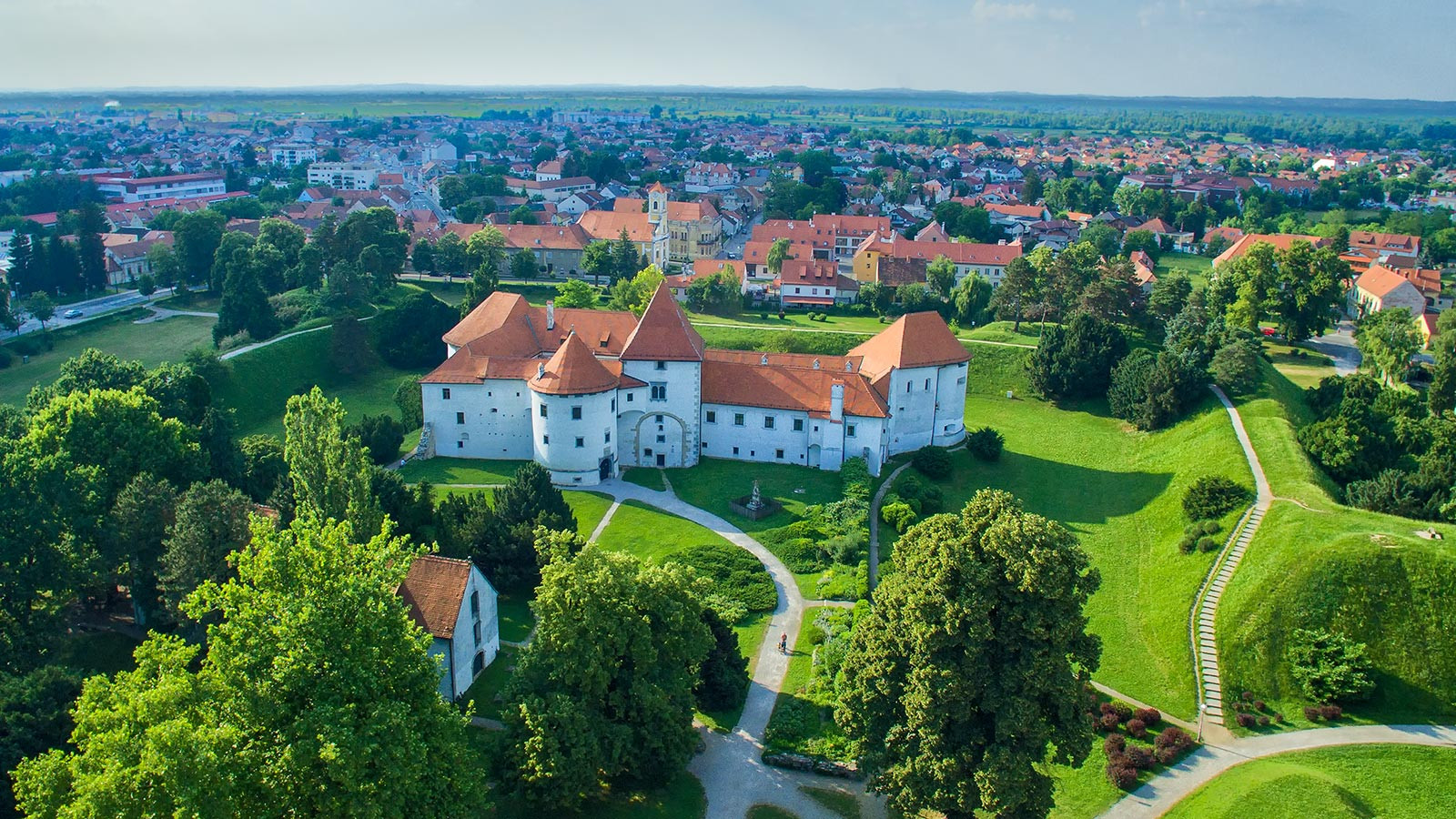 © Ivo Biočina / Croatia National Tourist Board
© Ivo Biočina / Croatia National Tourist Board
Varazdin Old Town is today inhabited by the Varaždin City Museum. They give guided tours around the fortress that was once the full extent of Varazdin Old Town. This city museum is the best way to learn about Varazdin's extraordinary buildings, culture and history. The museum has undertaken this role, and that of preserving items from Varazdin's past, since 1925. It has four permanent exhibitions and six major departments – Archaeology, History, Cultural History, Ethnographical, Entomology and the Gallery of Old and Contemporary Masters, some of which are inside the Old Town fortress itself.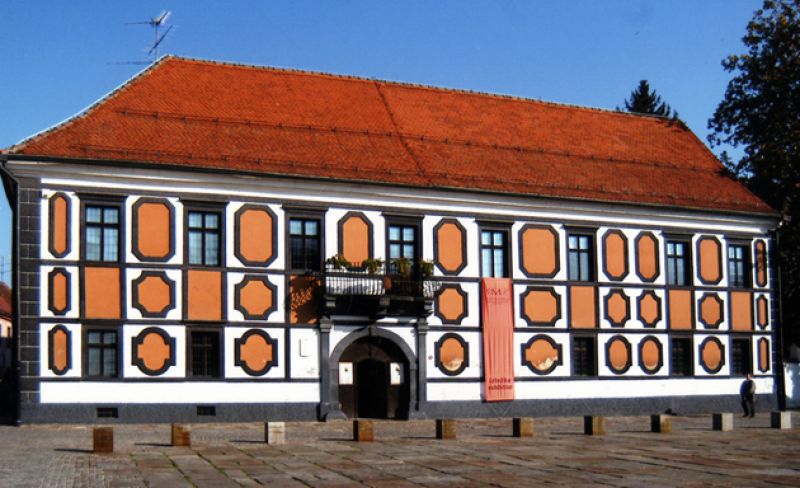 The Gallery of Old and New Masters of Varaždin City Museum © City of Varazdin Tourist Board
The Gallery of Old and New Masters of Varaždin City Museum © City of Varazdin Tourist Board
The Old Town fortress itself is medieval in origin, its construction having begun in the 14th century. Its Gothic towers were added a century later and the collection of buildings was remodelled and added to right up to the 19th century, in response to its inhabitants and its purpose.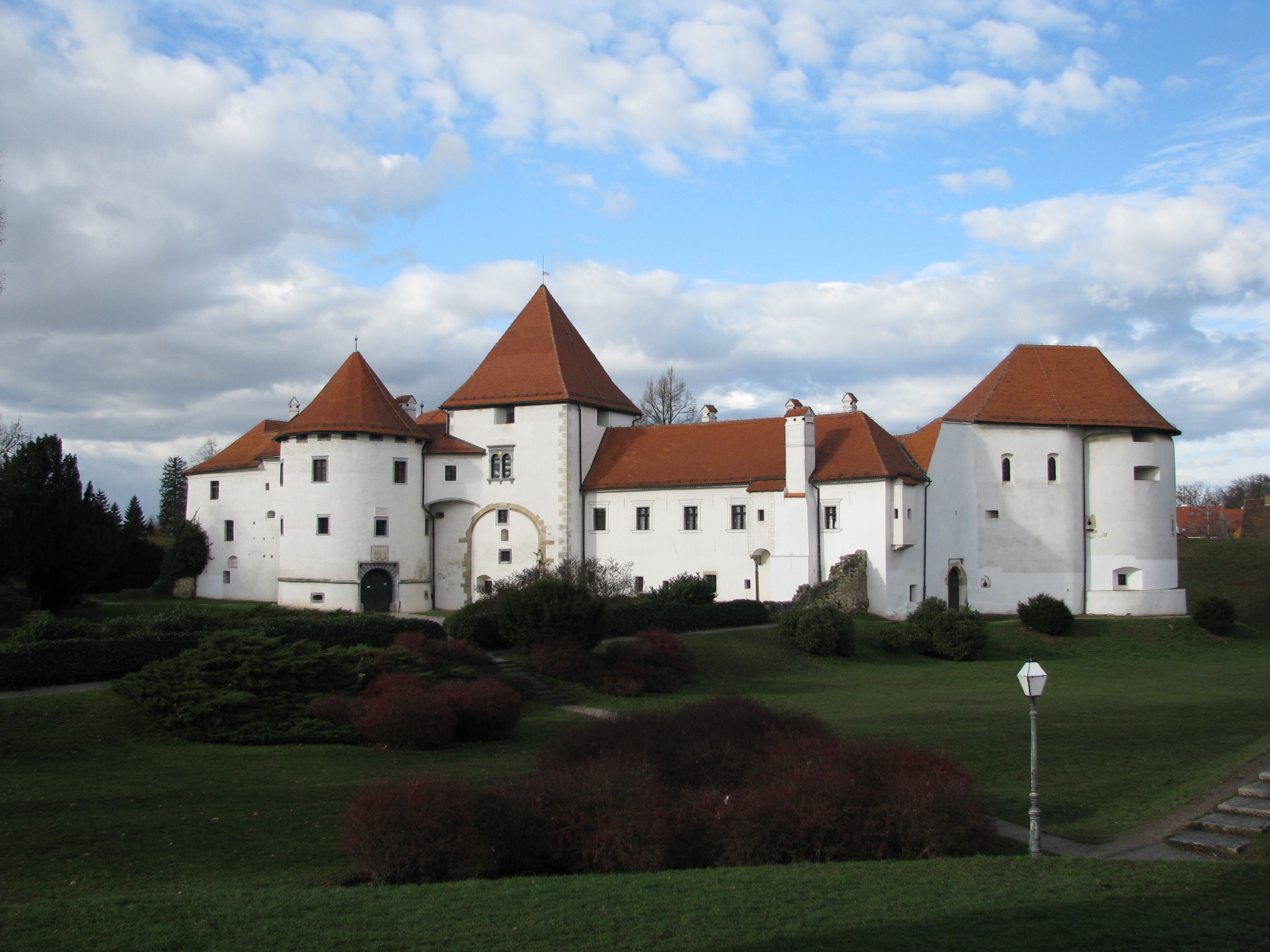 © Ex13
© Ex13
For defence against the Ottomans in the 16th century, it was reconstructed as a Renaissance fortress – high earthen walls with bastions were added, and a double moat. During the past, many noble families have lived here - the Counts of Celje, John Ungnada, George of Brandenburg and Croatian Ban Thomas Erdödyja and his successors. Indeed, Varazdin was once the capital city of Croatia, ruled from these very buildings. In its changing use, architecture and occupancy lies the story of not only the development of Croatia but that too of Europe and it is this that makes Varazdin Old Town eligible for the European Heritage Label.
The European Heritage Label is awarded to sites that bring to life the European narrative and the history behind it. The European Heritage label is currently awarded only every two years. So far, the only site in Croatia to receive the European Cultural Heritage Label from the European Commission is the Neanderthal Museum in Krapina. Its label was awarded in 2015.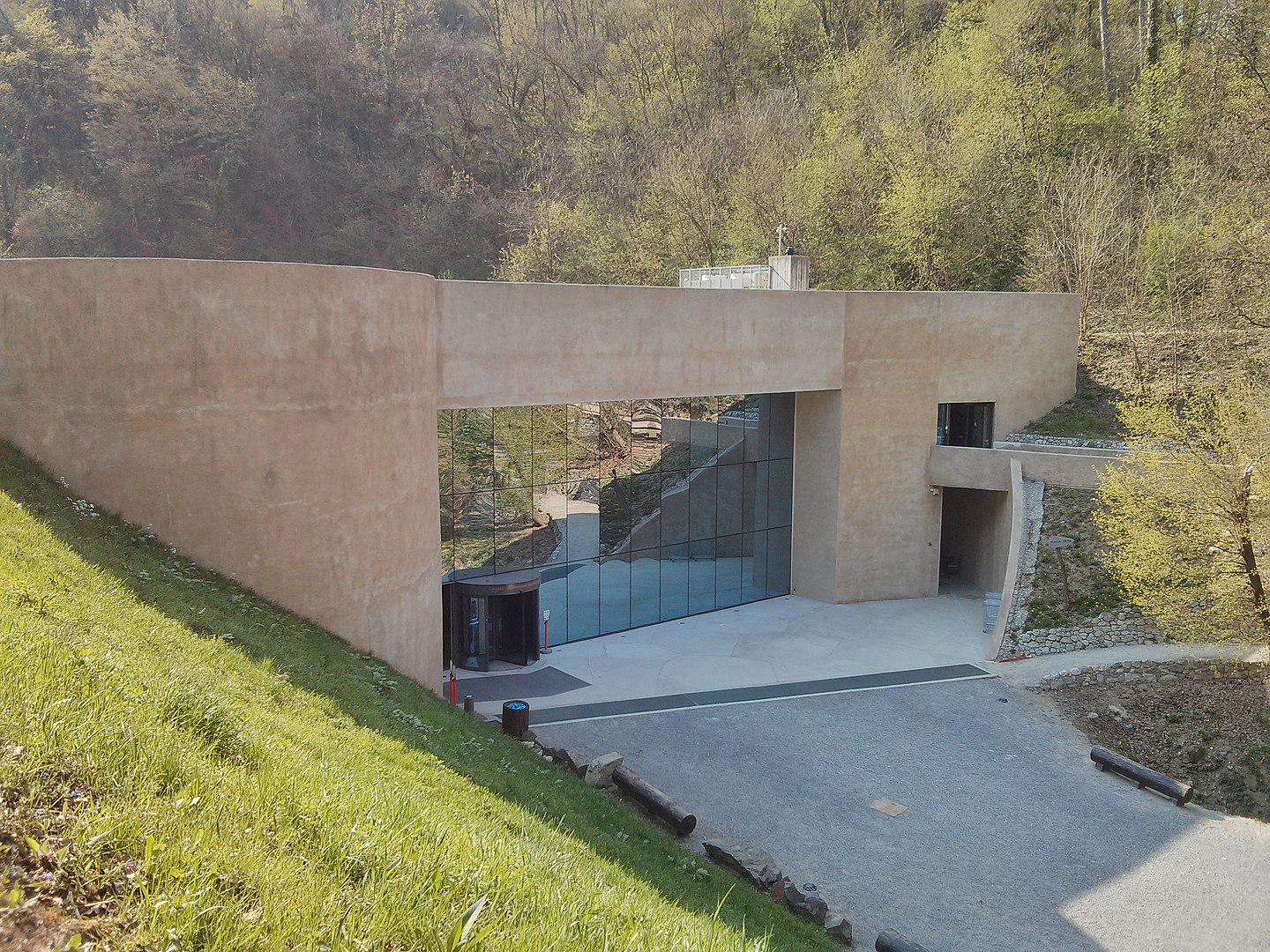 The Neanderthal Museum in Krapina, also in Northern Croatia. It received its European Heritage Label in 2015 © Zeljko Filipin
The Neanderthal Museum in Krapina, also in Northern Croatia. It received its European Heritage Label in 2015 © Zeljko Filipin
PHOTOS: Changing Face of Historic Petrinja - How It Used To Look
January 12, 2021 – The pictures of Sisak-Moslavina after the earthquake of late 2020 tell a terrible tale. Sitting close to the epicentre, the town of Petrinja was badly damaged. Once the main town of the area, this is not the first tragedy it has undergone. Nor is it the only tragedy it will overcome. The devastating pictures we currently see are not the real Petrinja. These images are temporary. Historic Petrinja has survived the attack of invading armies, of changing politics and regimes. It has rebuilt, kept its heart and retained its community. The following pictures remind us of historic Petrinja through the ages – how it once was, and how it will be again
"From 1991 to 1995 we were occupied," one resident of historic Petrinja tells TCN of his remembrances of the Homeland war. "Here and near Karlovac was the closest they got to Zagreb. If you think about it, that's really close. The town was devastated. My street was burned almost completely to the ground. My house included. I think maybe 5 houses in the whole street survived. That's from a total of around 50."
Were these houses destroyed by guns attacking the occupiers or by those occupying the town? (your interviewer asks, perhaps naively)
"Ha! (a dry laugh) They were destroyed by those occupying the town".
Why would anyone do that to a town that they wanted to be part of their country?
"For over 20 years I ask myself the same question, Marc. I still do not have an answer to this day. They burned half of the city immediately after the occupation began. We saw our town burning to the ground. I was just a child at this time, my family fled to Sisak."
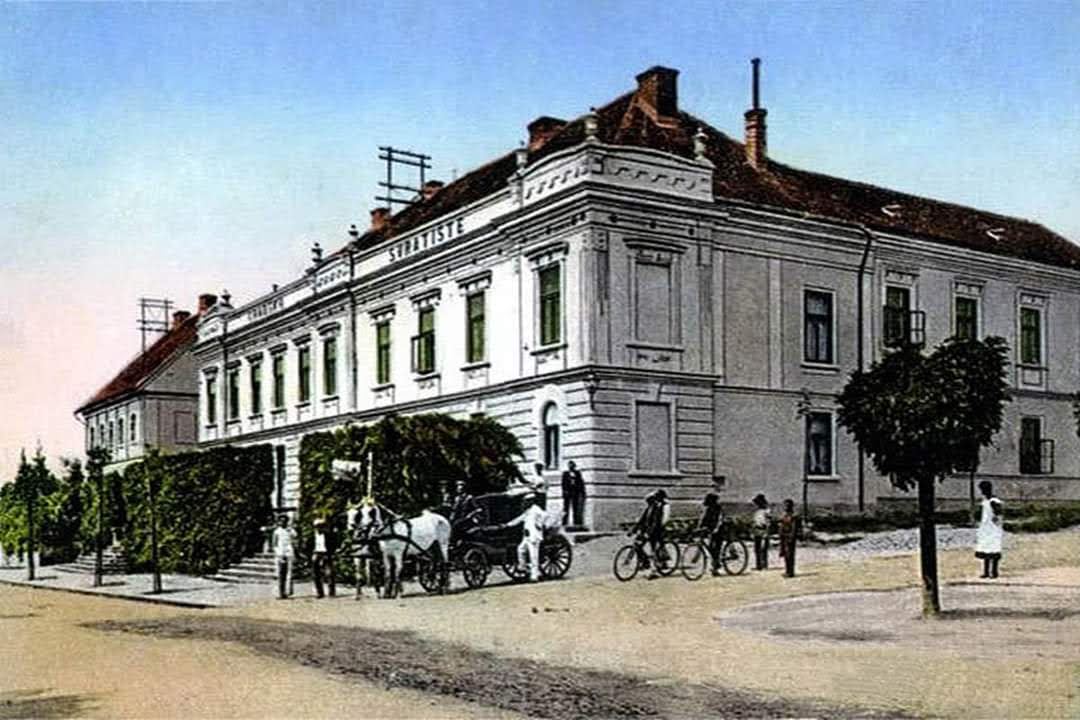 Croatian Home (Hrvatski Dom). At the time of this image, the building was located on Banska street. Today, it is known as Matije Gupca street
Croatian Home (Hrvatski Dom). At the time of this image, the building was located on Banska street. Today, it is known as Matije Gupca street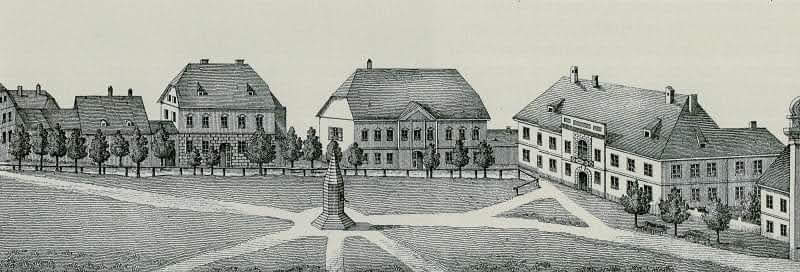
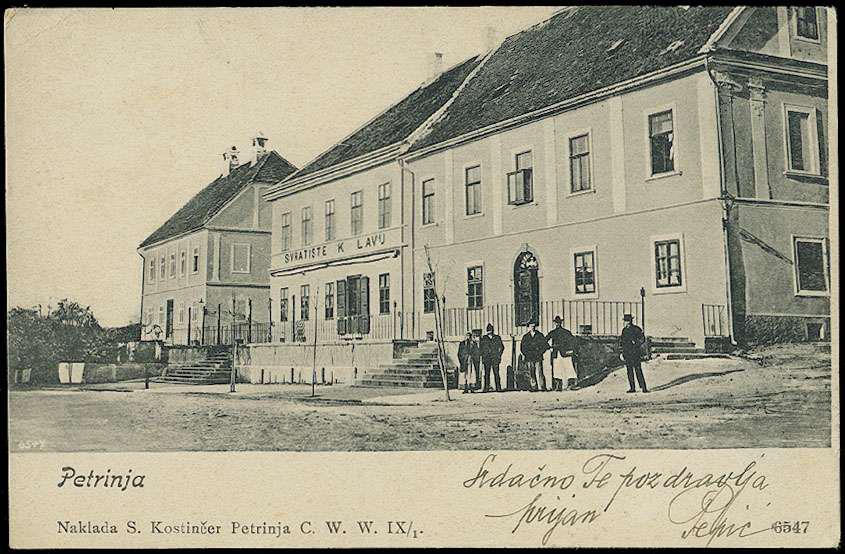
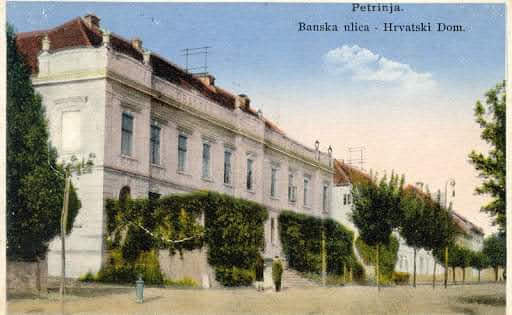
Croatian Home (Hrvatski Dom) on Banska street (today's Matije Gupca Street)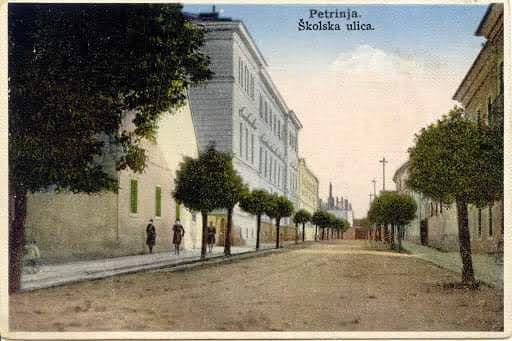
Formerly Školska street, this street is today known as Gundulićeva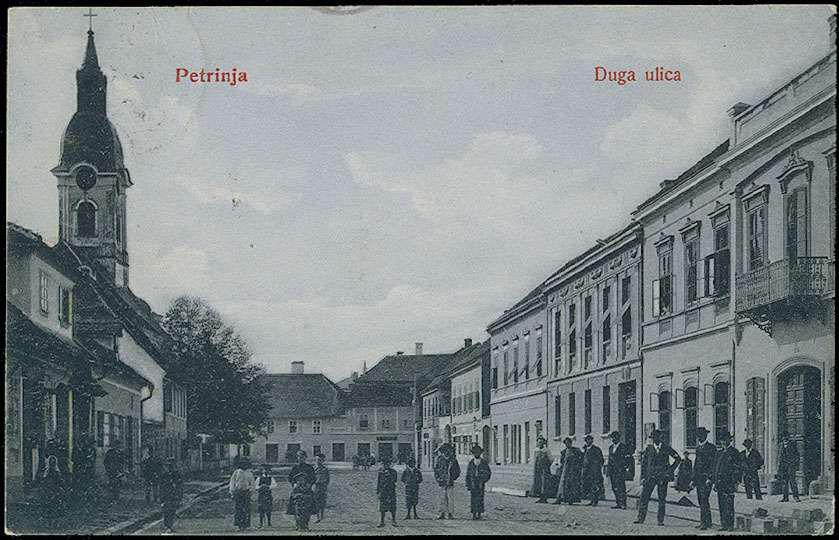
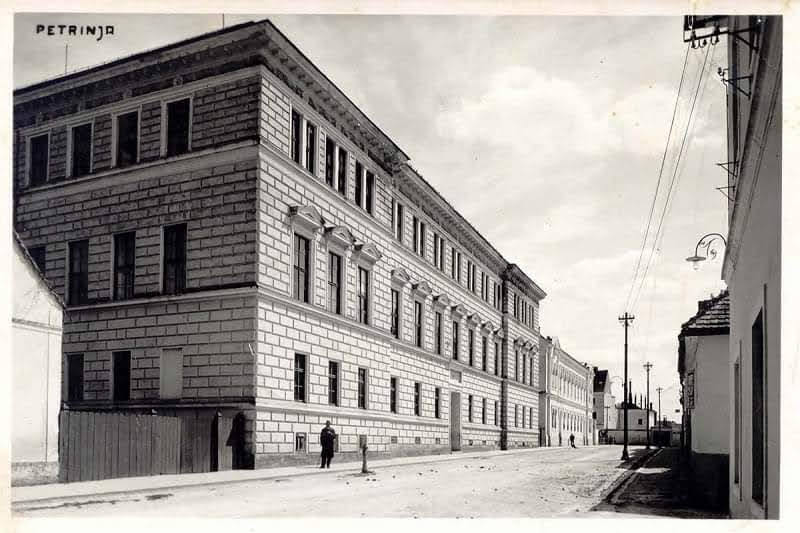
Today's secondary school building, formerly a teacher training school and a grammar school on Školska street (today's Gundulićeva)
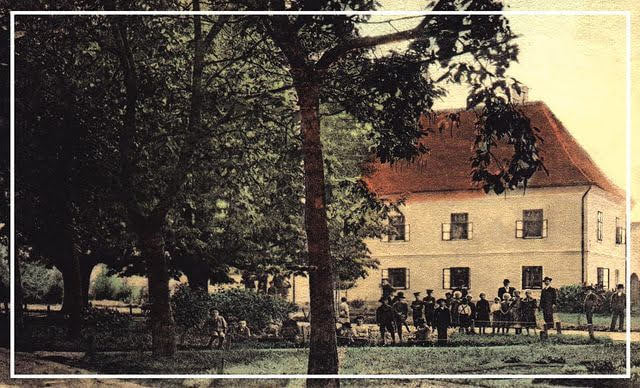
View of the former town courthouse from Petrinja town park
The town of Petrinja occurs where the river Petrinjčica meets the river Kupa , about 13 km southwest of Sisak and about 48 km southeast of Zagreb. Historic Petrinja is the capital of an area today known as Banija or Banovina (both are correct). The prefix 'Ban' refers to the title of a royal appointed 'duke', or similar, who used to run the area (or not) when it was part of the Austrian empire.
Many people have travelled very far to help the relief efforts since the earthquake of late December 2020. Because some people have no homes, no electricity, no food, no jobs, no heat. And it is the middle of winter. Others stay at home and argue online about whether the area should be referred to as Banija or Banjovina. How - and if - you judge such a debate is entirely your choice.
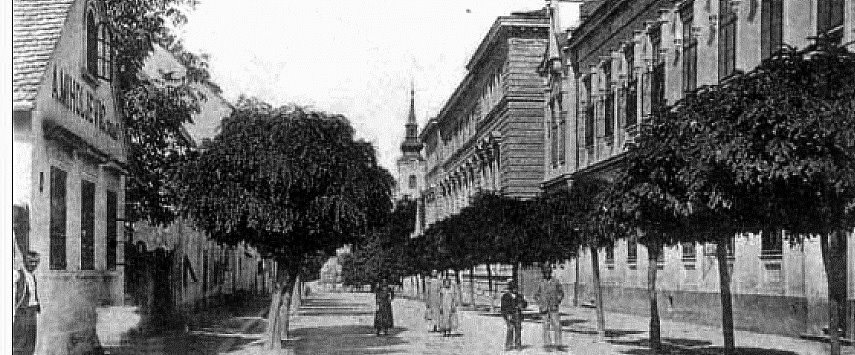
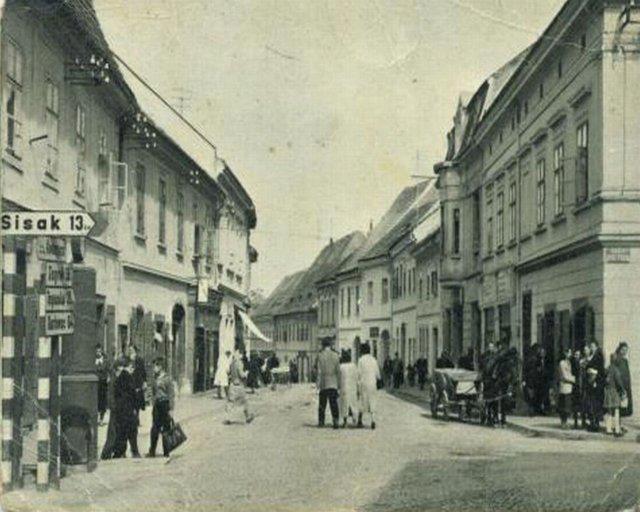
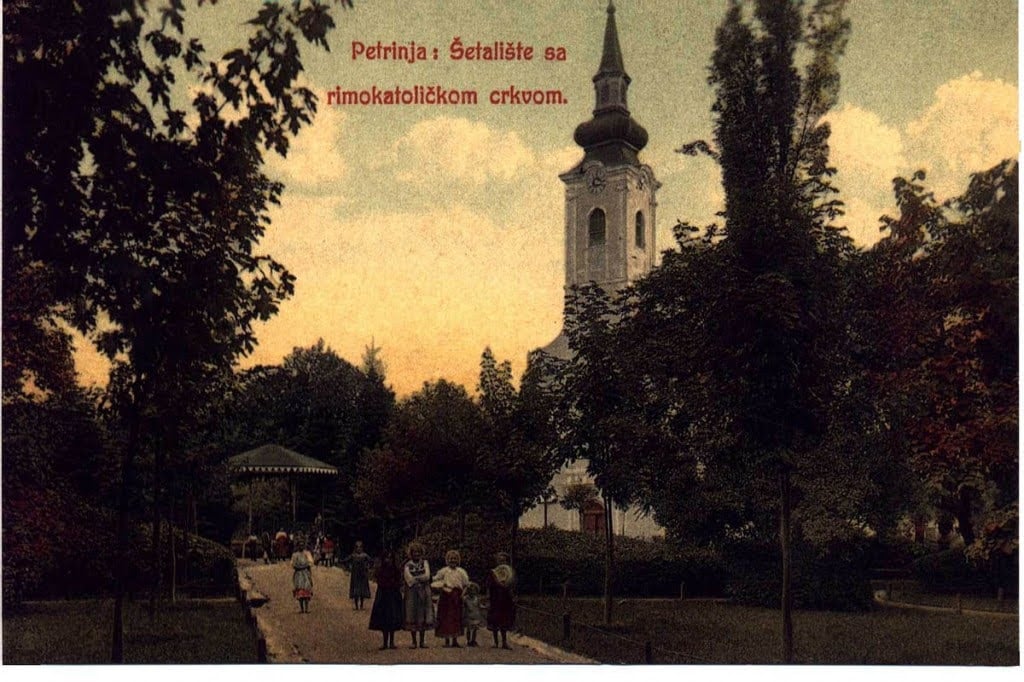
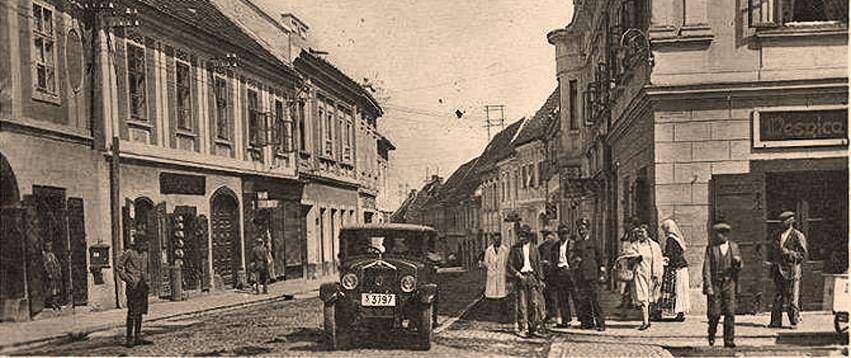
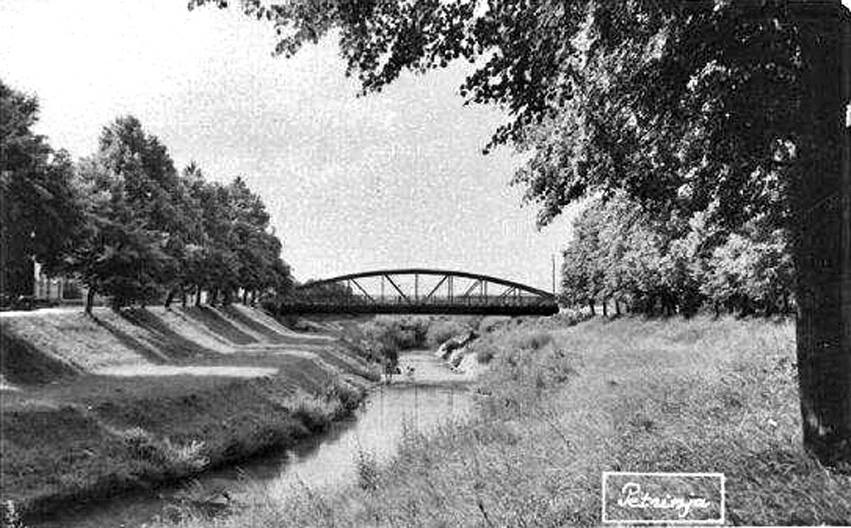
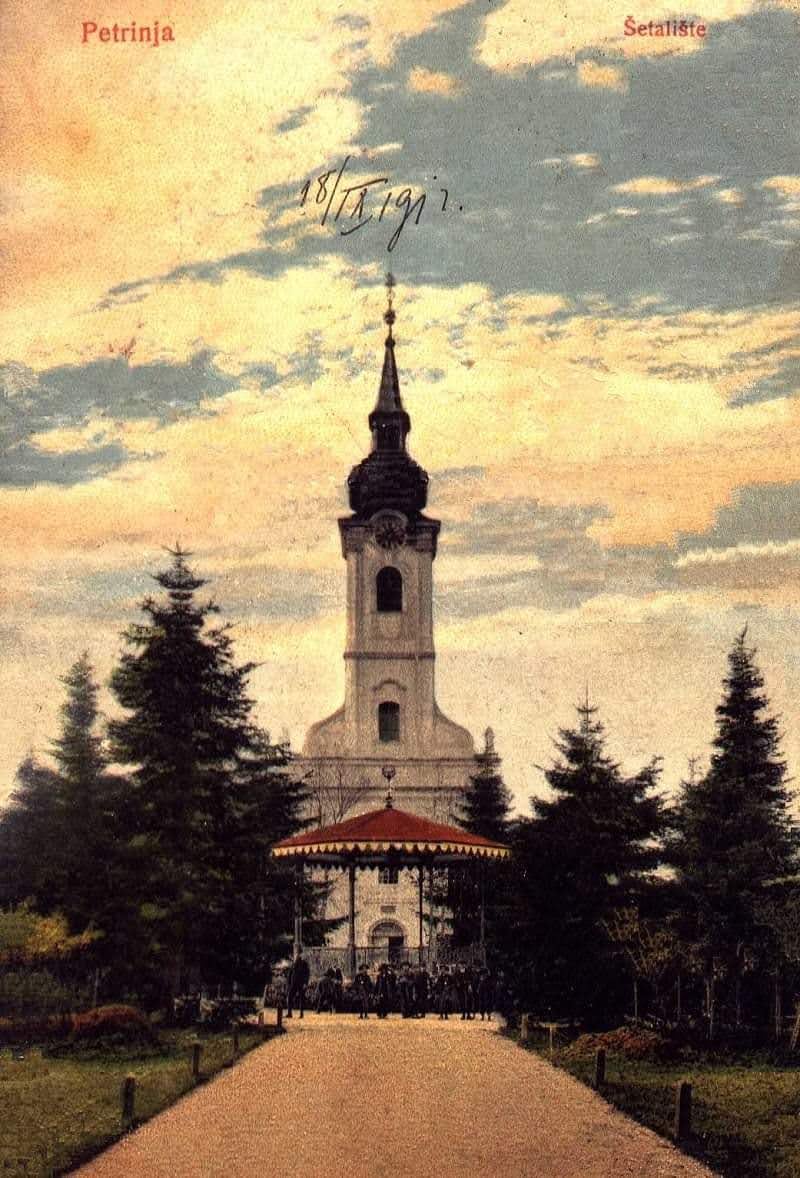 Church of St. Lawrence in the town park
Church of St. Lawrence in the town park
After fleeing from the invading ottomans, the Gavrilović family located in the area of historic Petrinja during the mid 17th century. In the year 1773, the Empress Marija Teresa decided Petrinja would be a centre of craft guilds, including the butcher's guild, of which the Gavrilović family were a part.
In the early 1800s, the Gavrilović family became the main suppliers of meat for Napoleon’s troops located here, on the former military frontier. By 1883, long after the departure of the French, the Gavrilović meat factory employed 50 people and slaughtered 50 pigs a day. It became Croatia's first salami, sausages and cured meats factory.
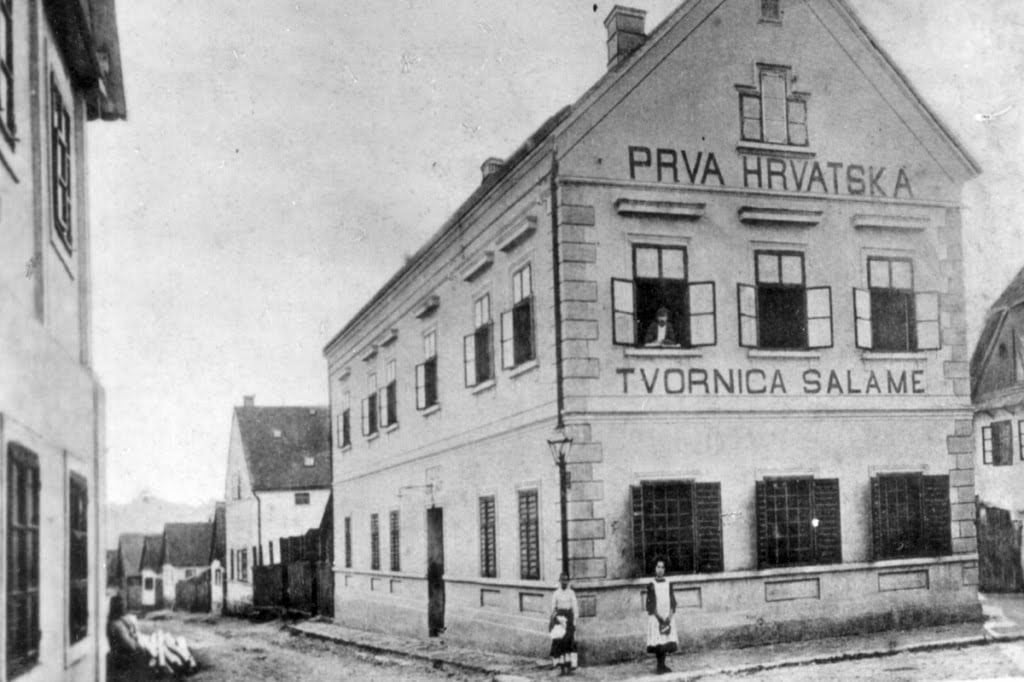 Croatia's first salami factory on Srnakova / Gundulićeva street
Croatia's first salami factory on Srnakova / Gundulićeva street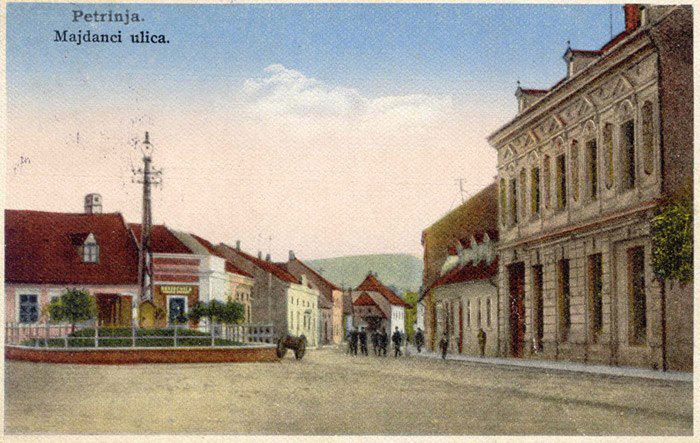
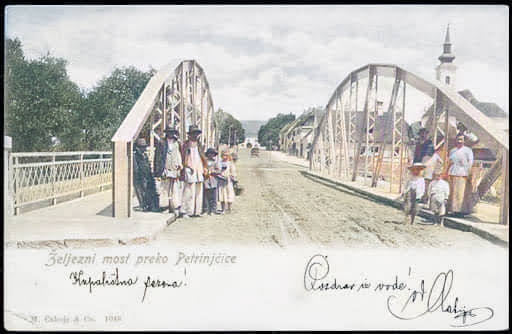
Iron bridge over the river Petrinjčica, Matije Gupca Street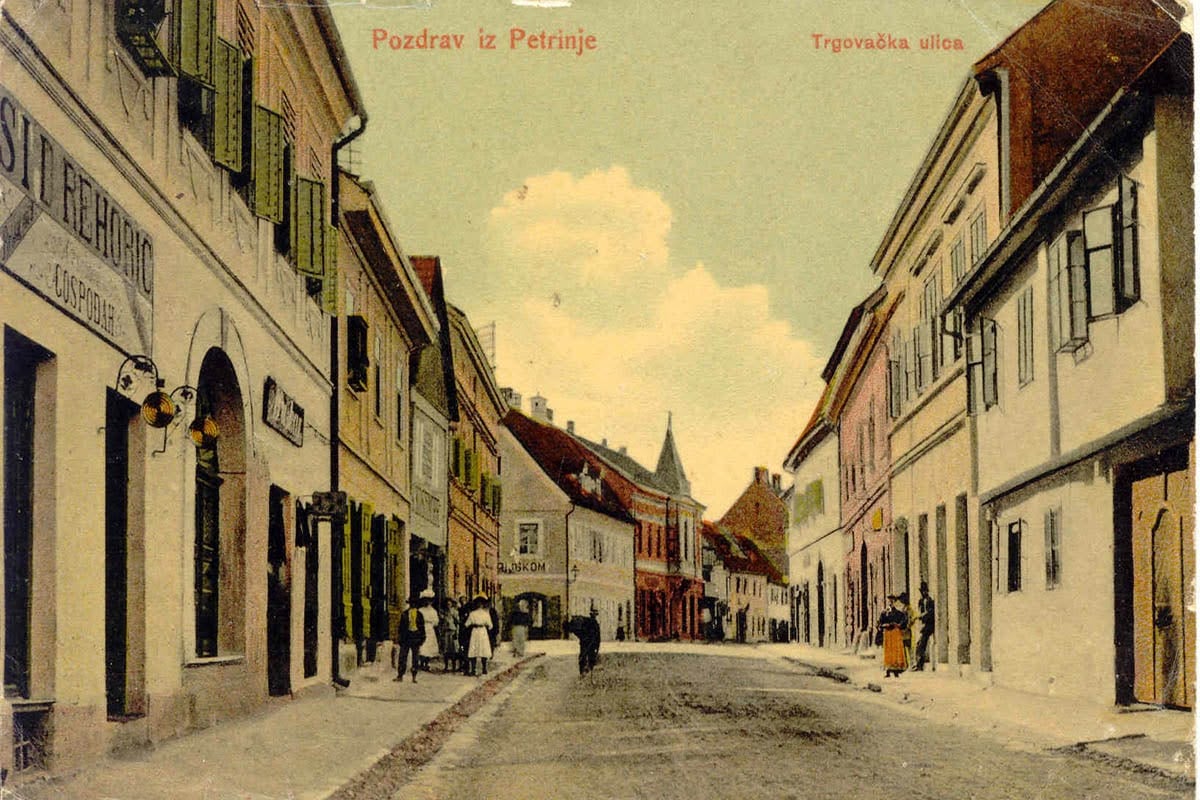 Trgovačka street, today known as Nazorova street
Trgovačka street, today known as Nazorova street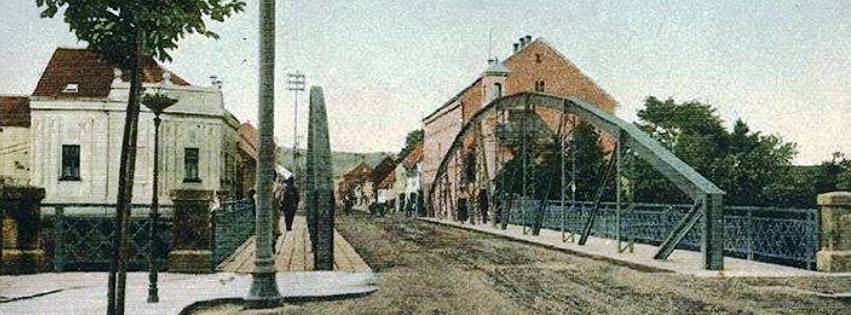
The town dates back to at least the 13th century, as does its first fortifications, built to stand against the invading Tartars. The city was granted free royal status during this time for its defence against these invaders
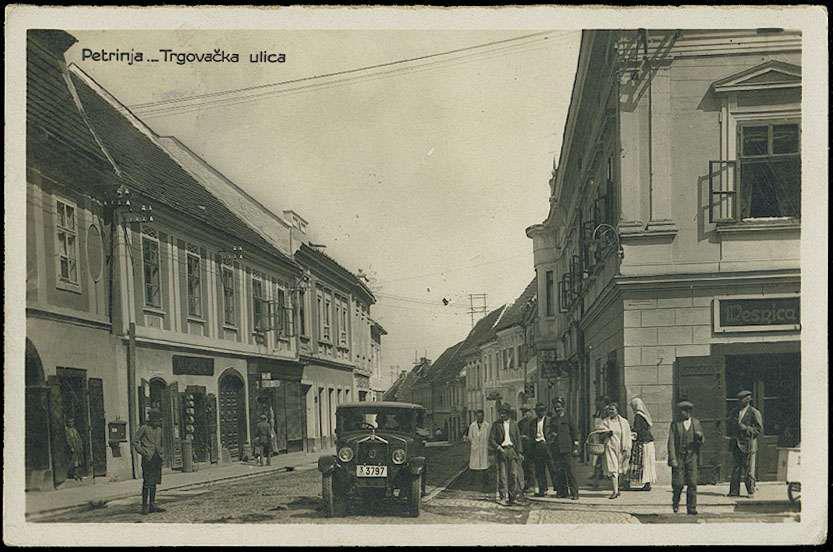
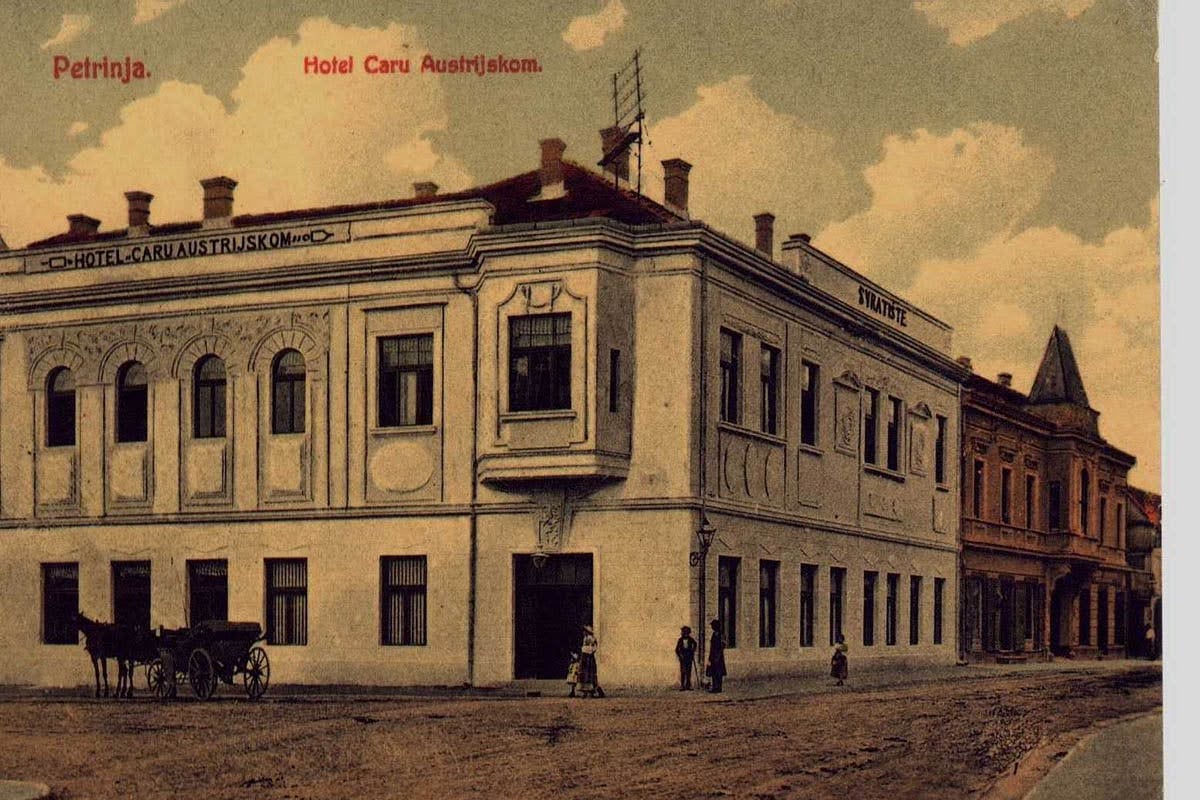 The town hotel, on Turkulinova / Nazorova street
The town hotel, on Turkulinova / Nazorova street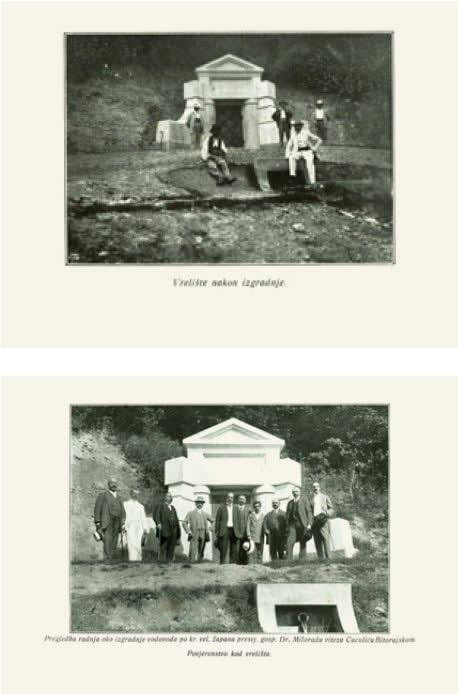
Petrinja springhead/water source on Jelen hill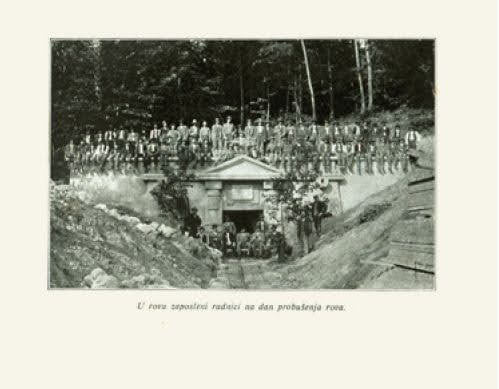
The grand opening of the city waterworks, on the hills overlooking Petrinja
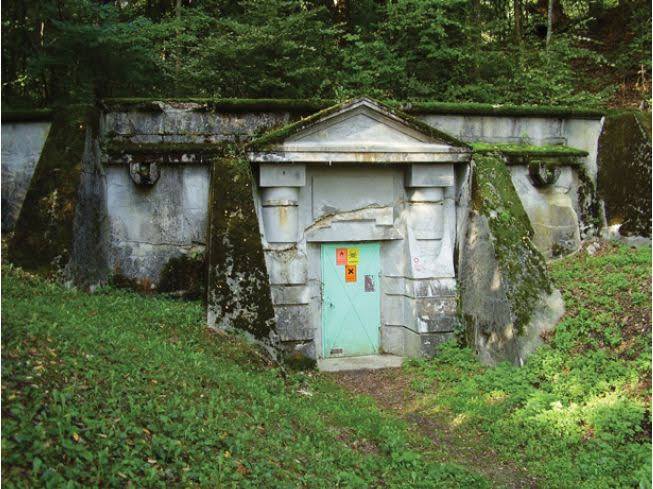 Contemporary view
Contemporary view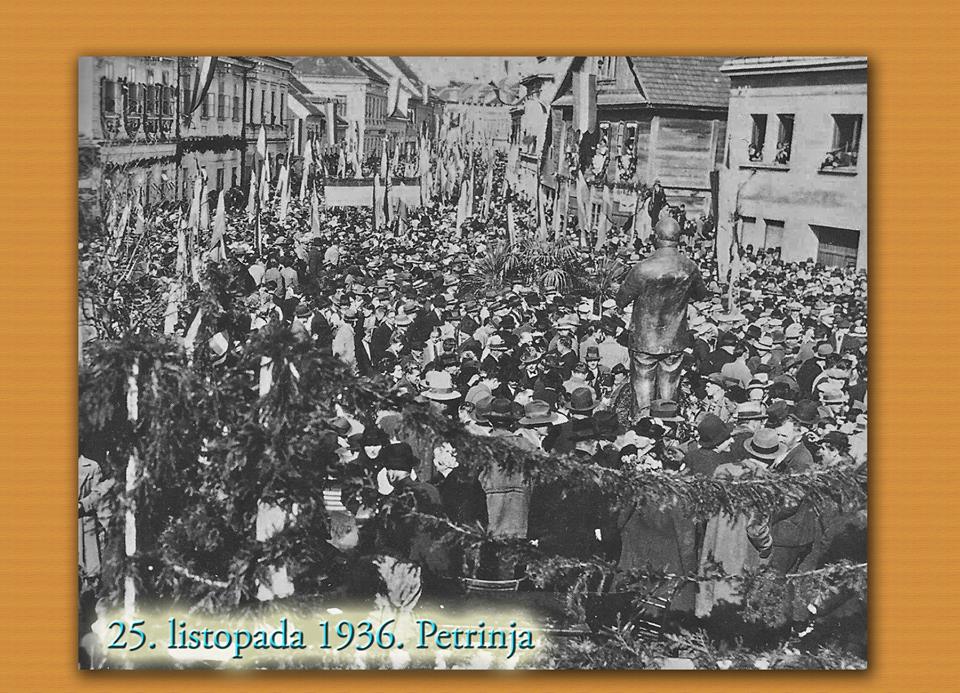
Historic Petrinja: The Yugoslav era
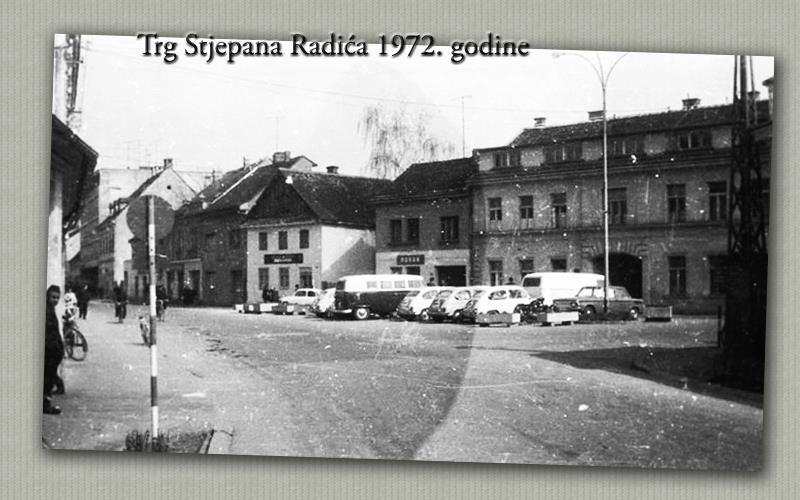
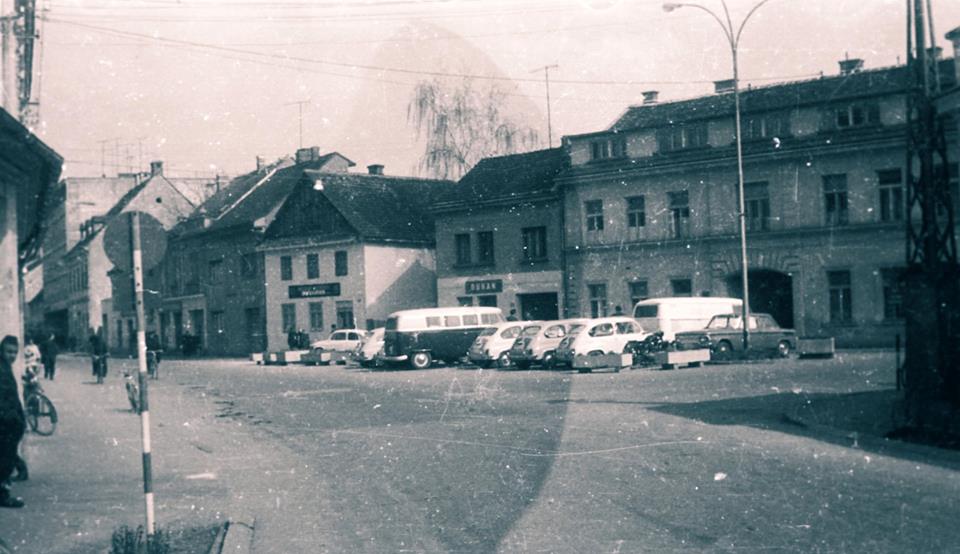
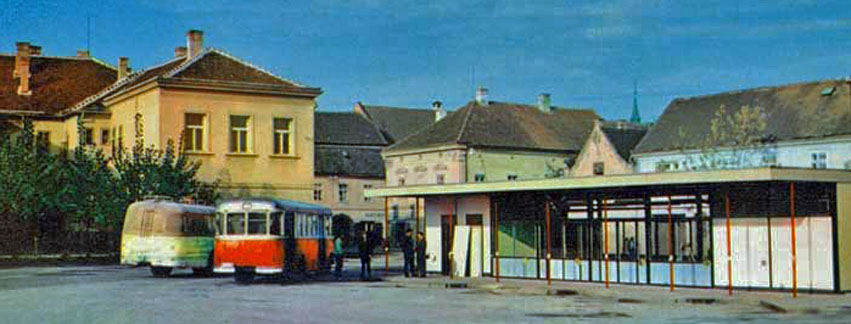
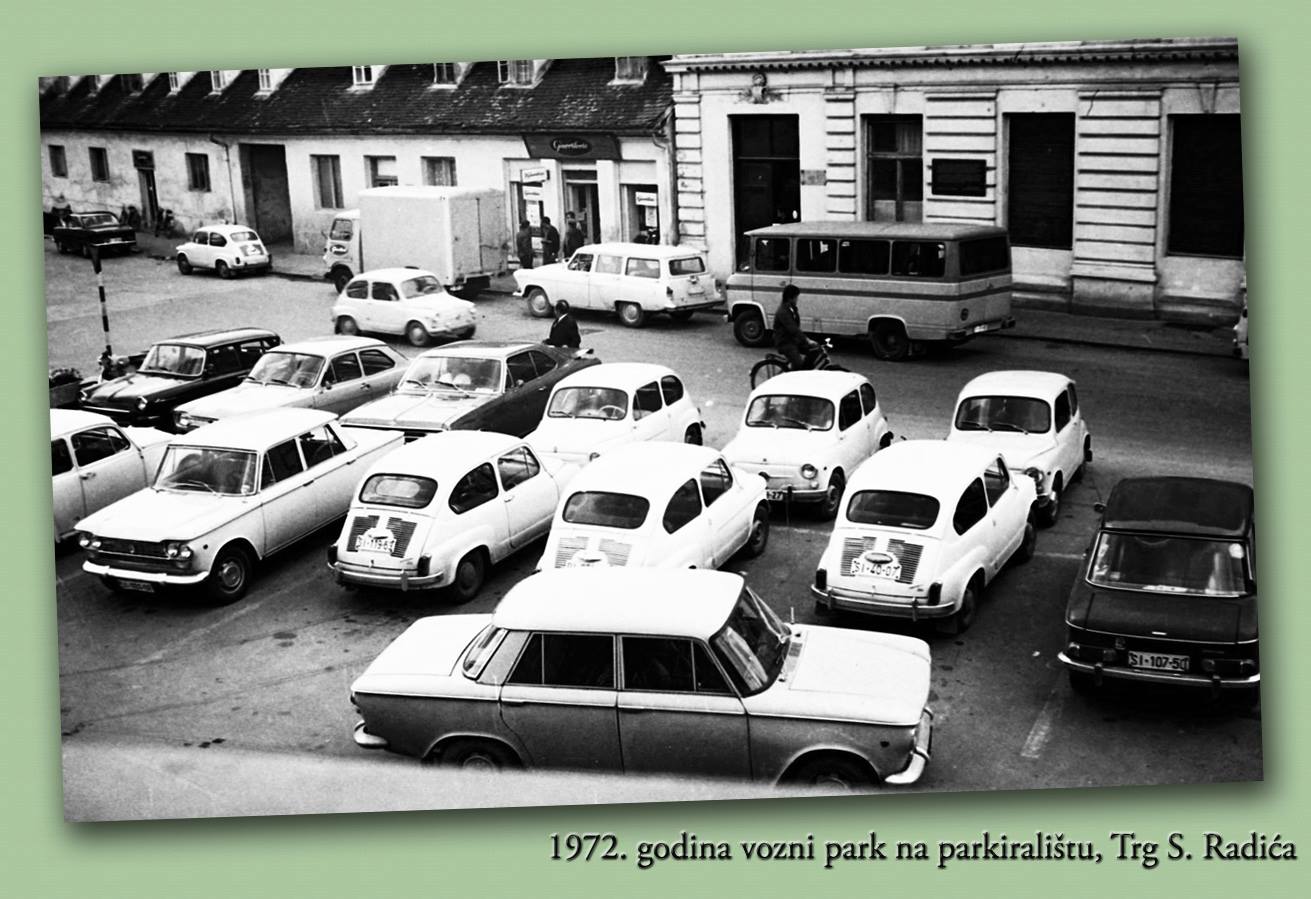
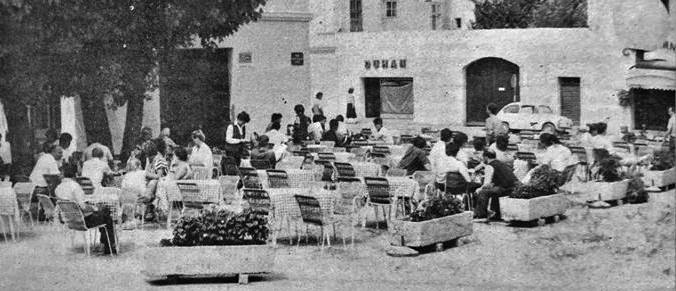
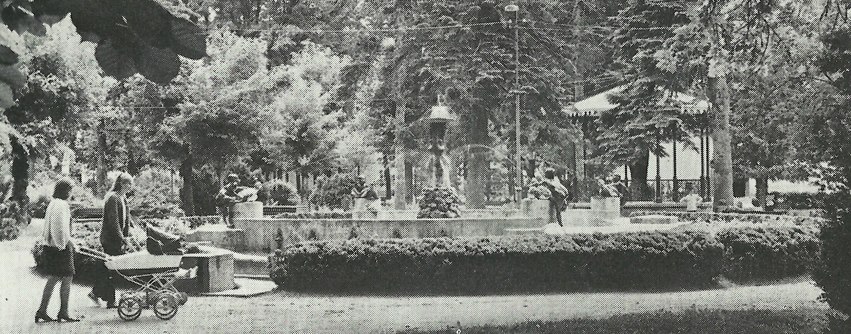
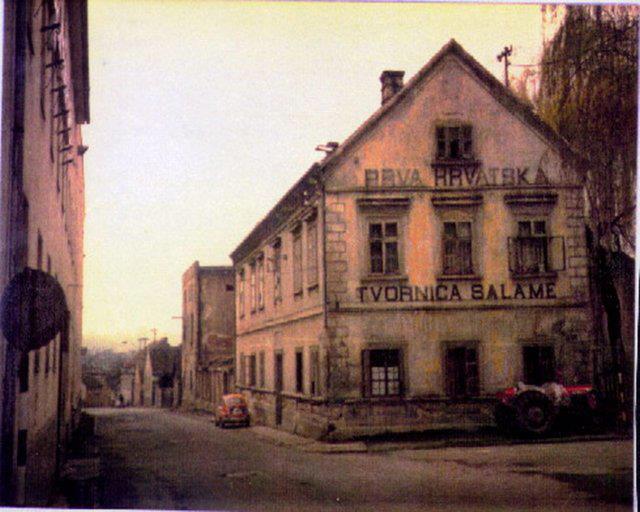
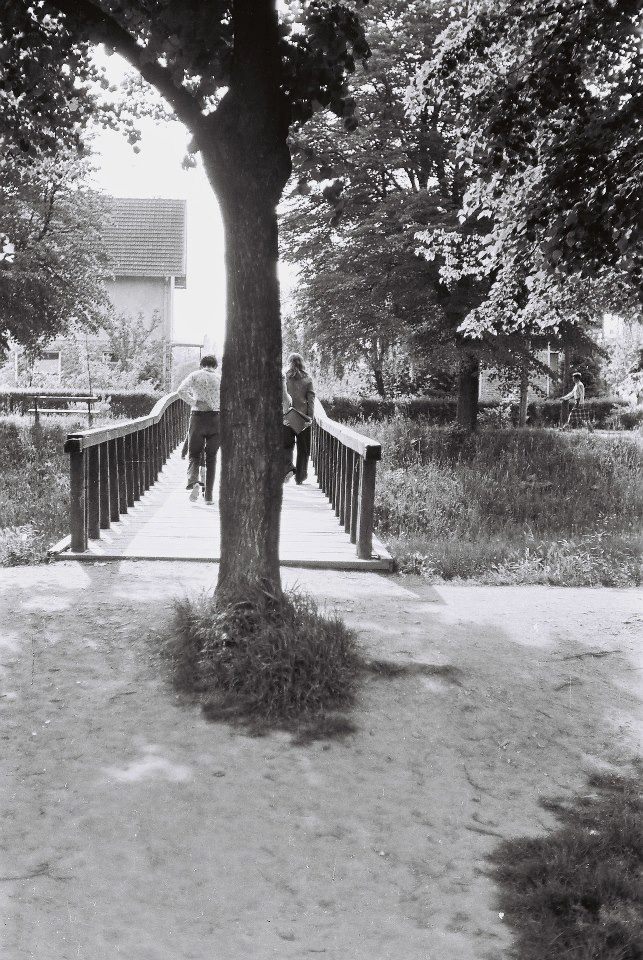
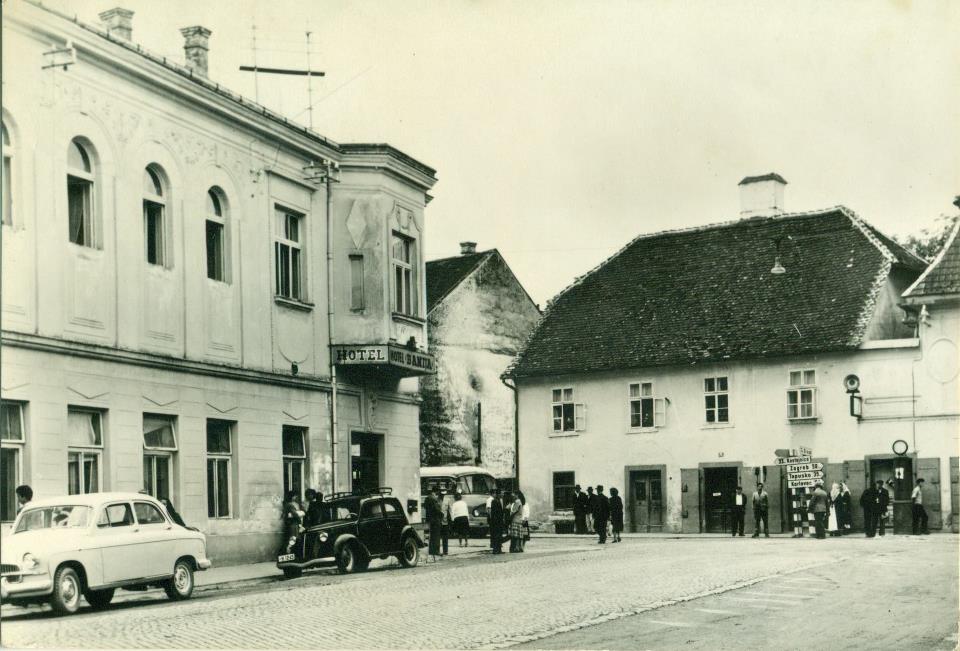
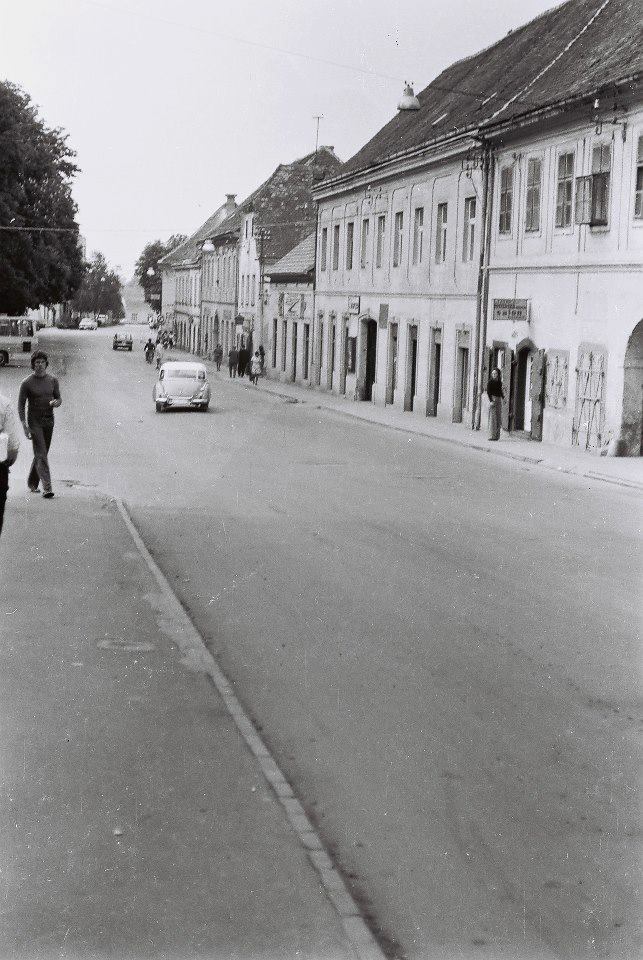
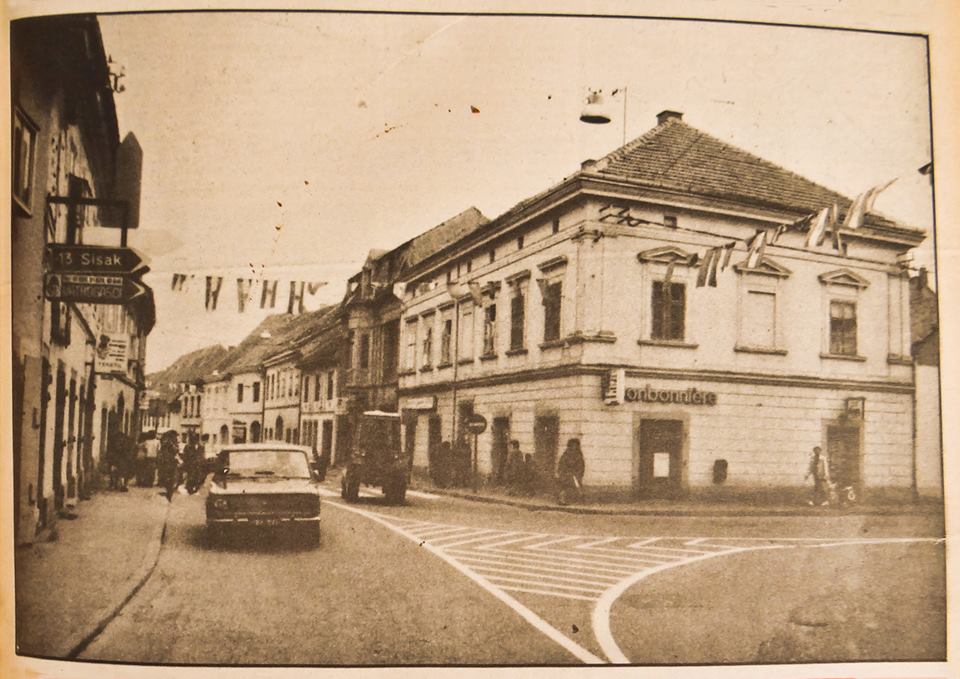
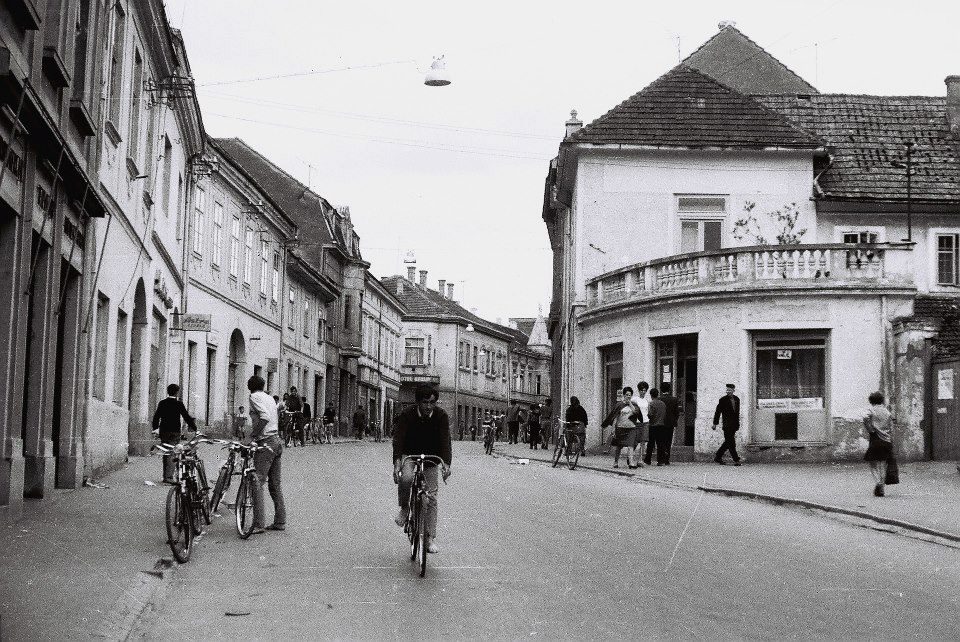
Petrinja has always been a town of the Christian religion. Many Orthodox Christians fled to the area to escape the invading Ottomans. The name of the town's most famous industrial family, Gavrilović, for instance, is more associated with Orthodox Serbia than Catholic Croatia. But, by 1948, over 82% of the town identified as Croatian. The town and surrounding areas were repopulated following the Second World War, for political and economic reasons. By 1981, 31.36% of the population of historic Petrinja and its surrounding settlements identified as Serbs, 39.31% as Croats and 24.69% as Yugoslavs. If you're not from the region, that might be difficult to get your head around.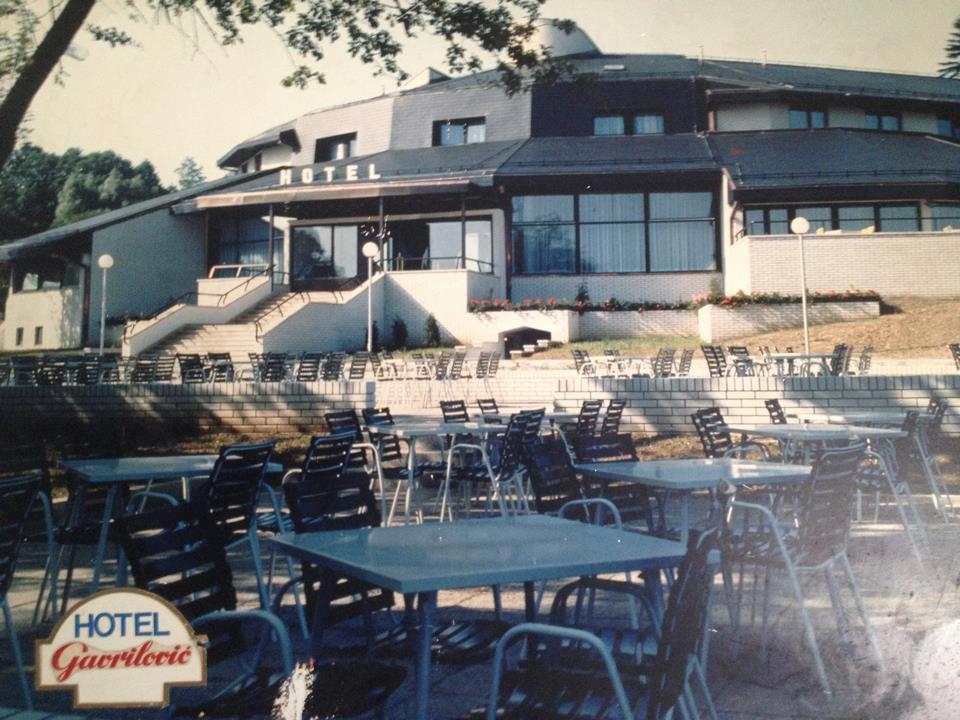
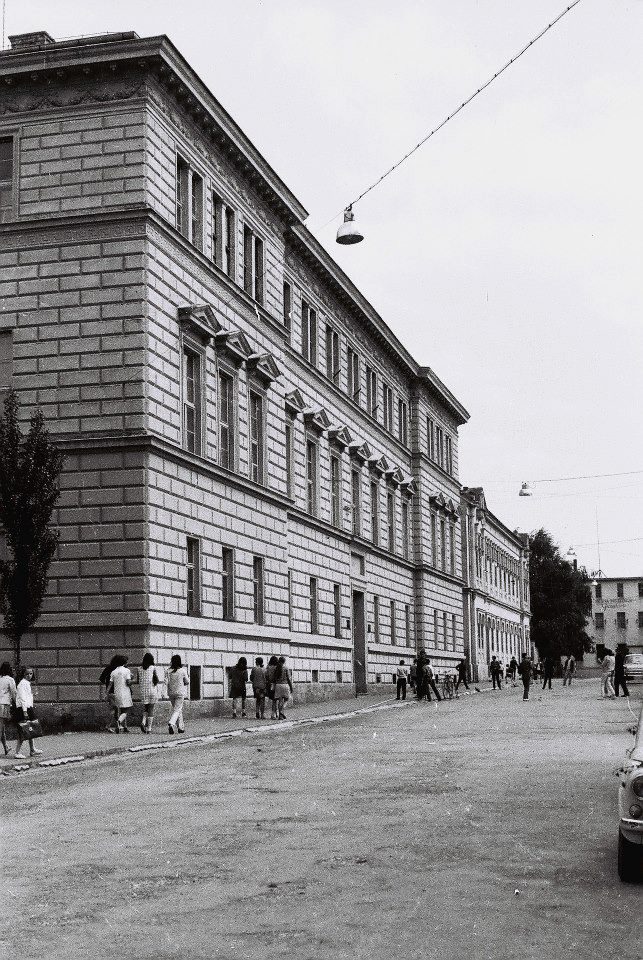
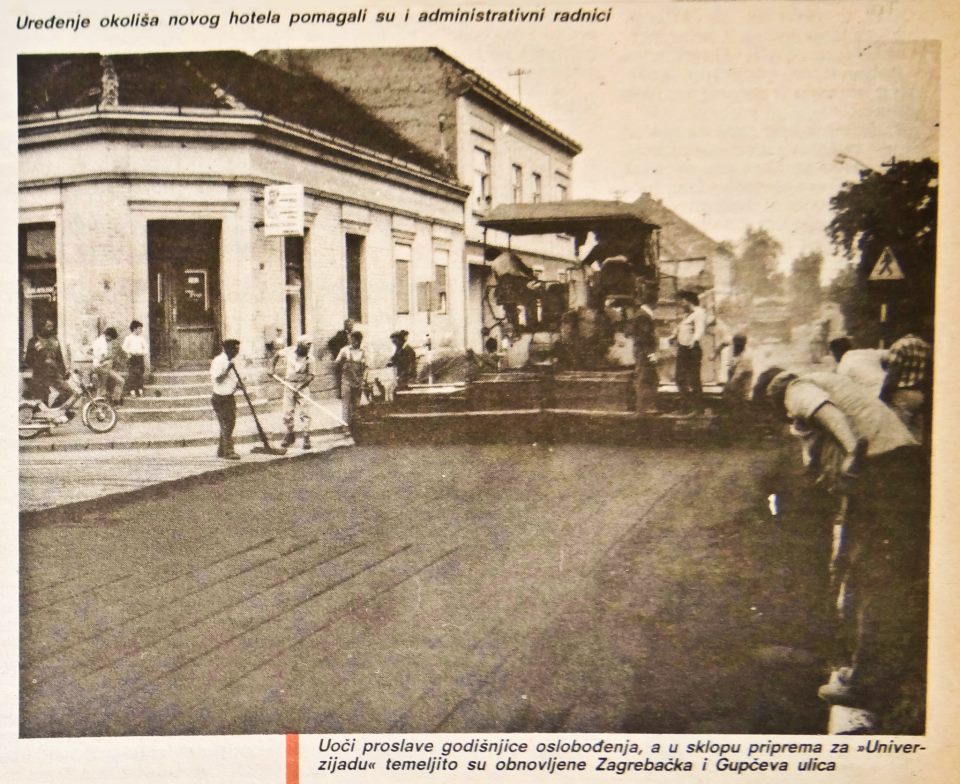
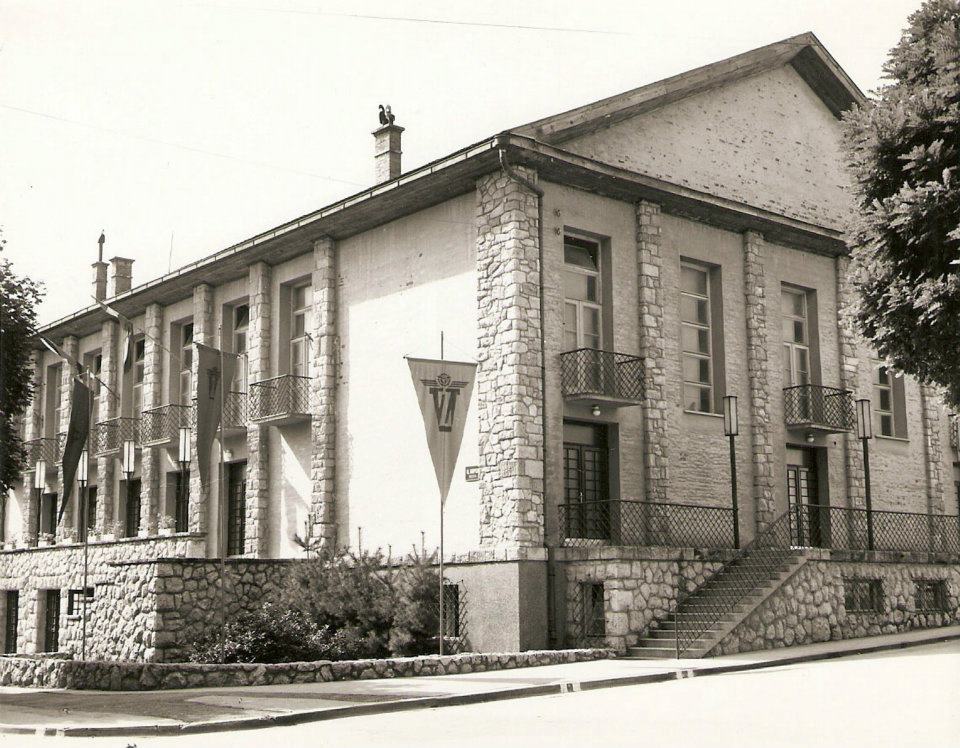
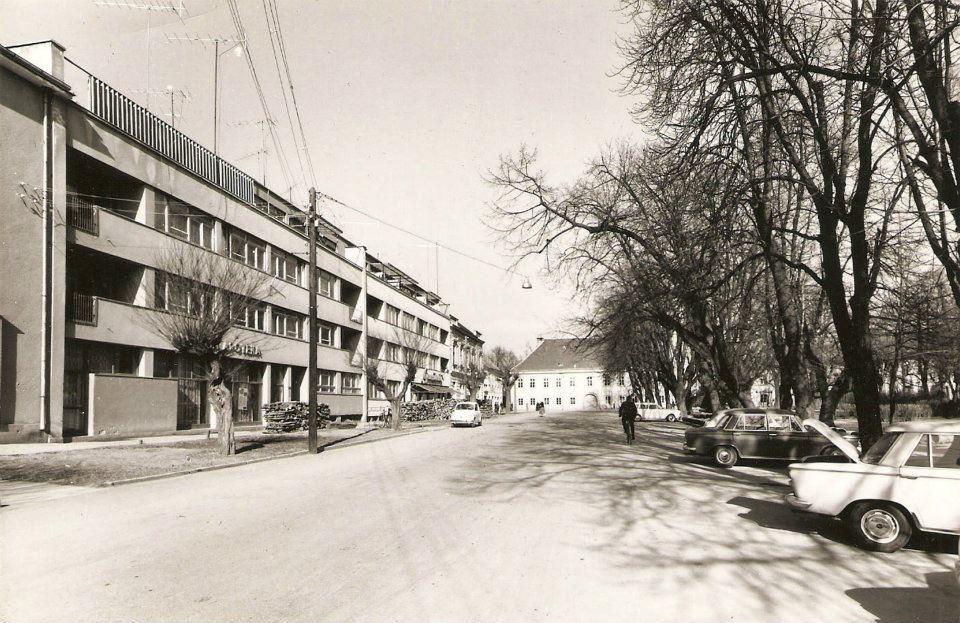

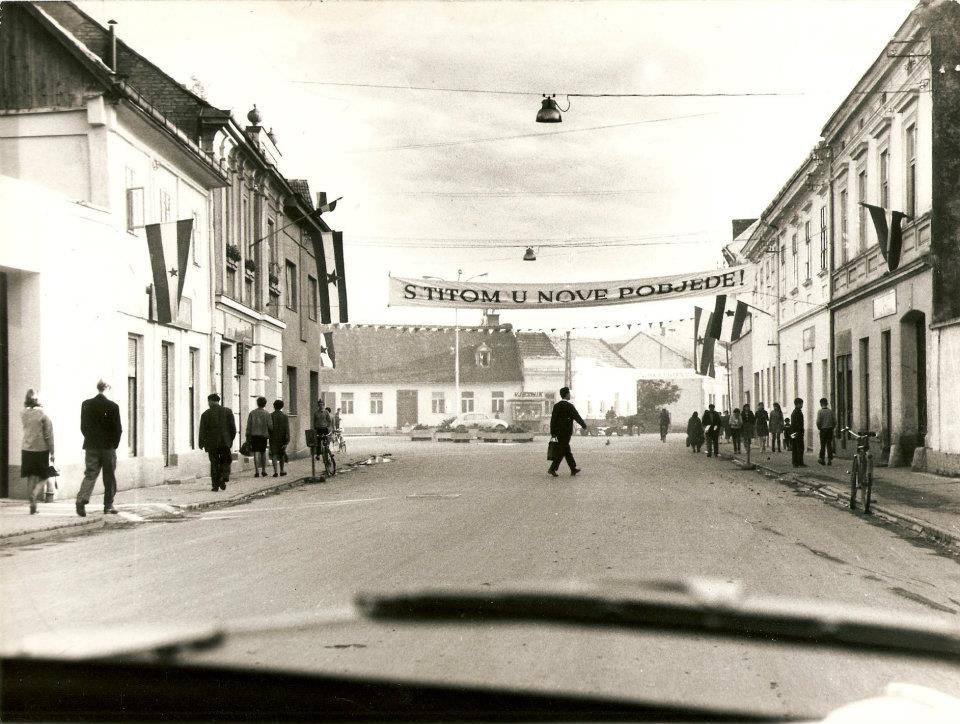
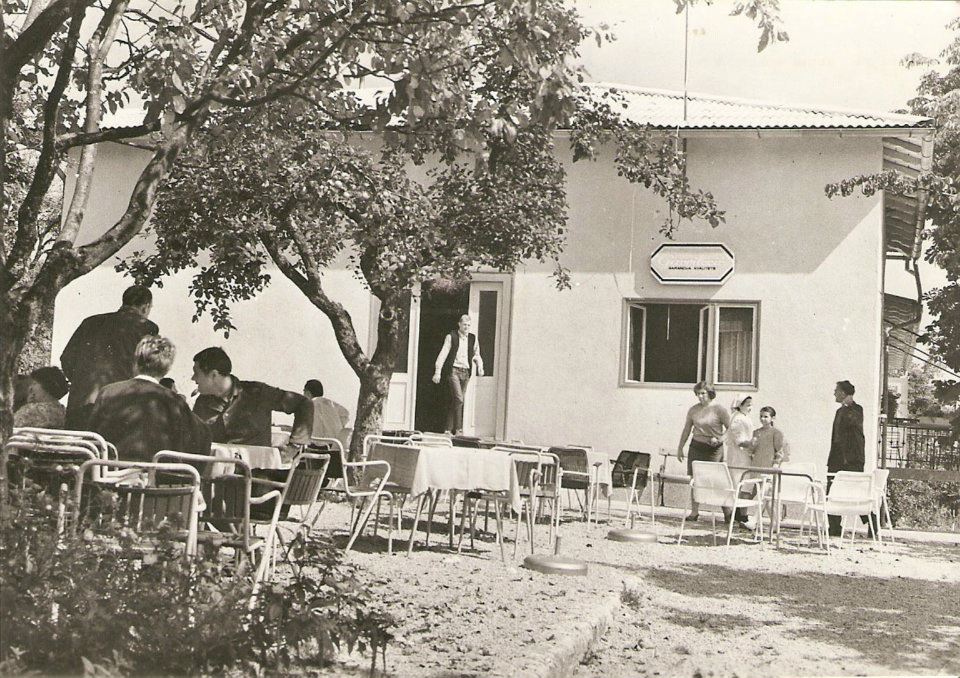
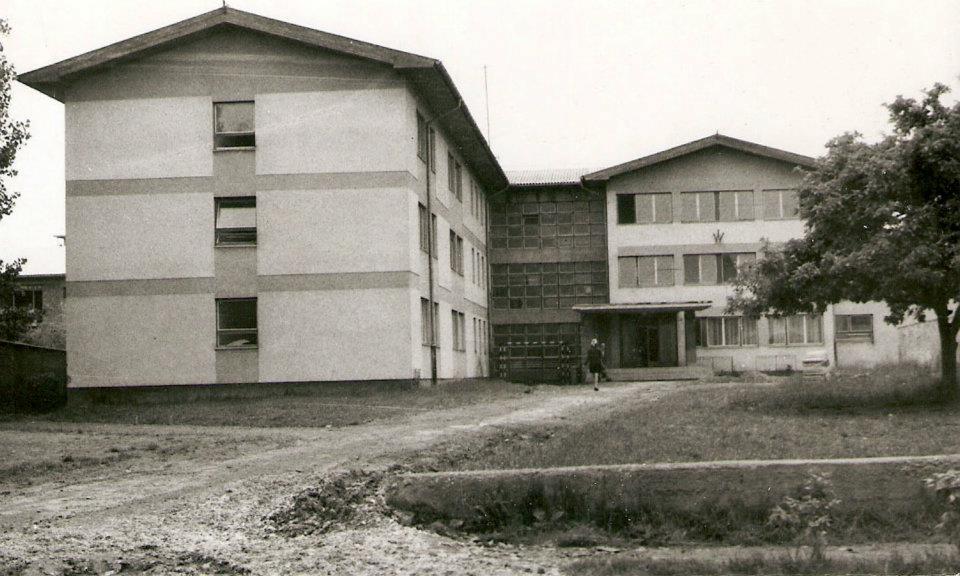
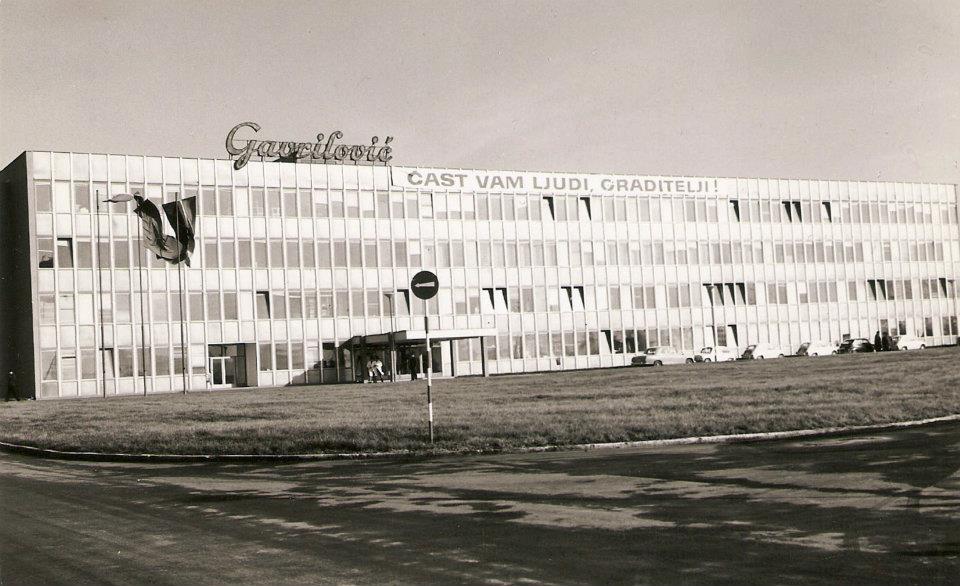
”Even in the times of the Iron Curtain, the Gavrilović company supplied meat to the American army who were stationed in some areas of southern and eastern Europe,” a resident of historic Petrinja tells TCN. “Everyone across Yugoslavia knew about this company. They had lots of great products – they still do! Many people used to work there,” Although the Gavrilović family fled the area after the Second World War, when the company was seized and nationalised by communist authorities, they came back in the 1990s to save it from bankruptcy. They returned production to the historic Petrinja area and today the company is run by the ninth generation of the Gavrilović family to be at the helm
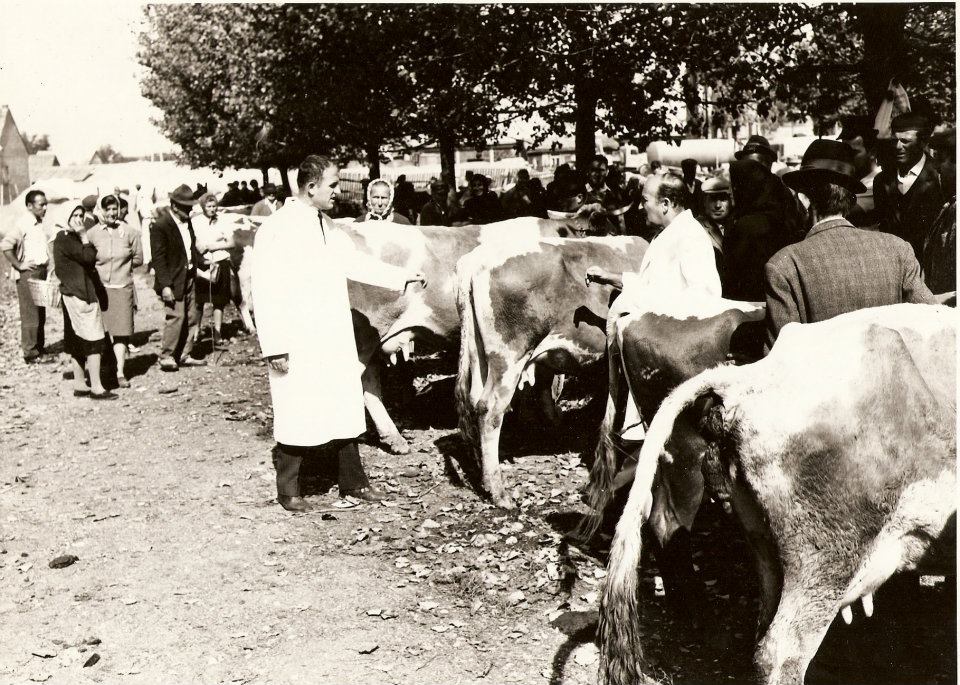
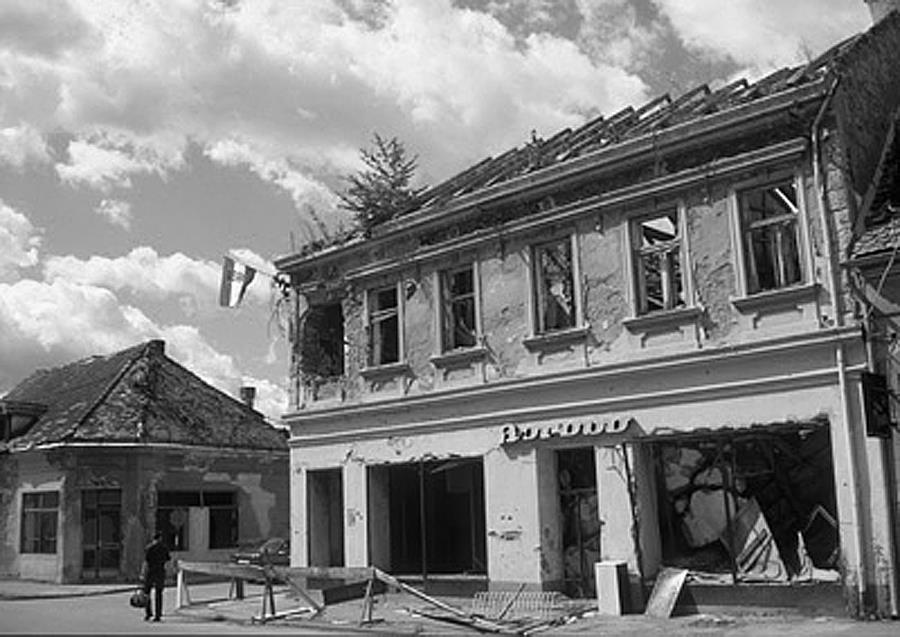
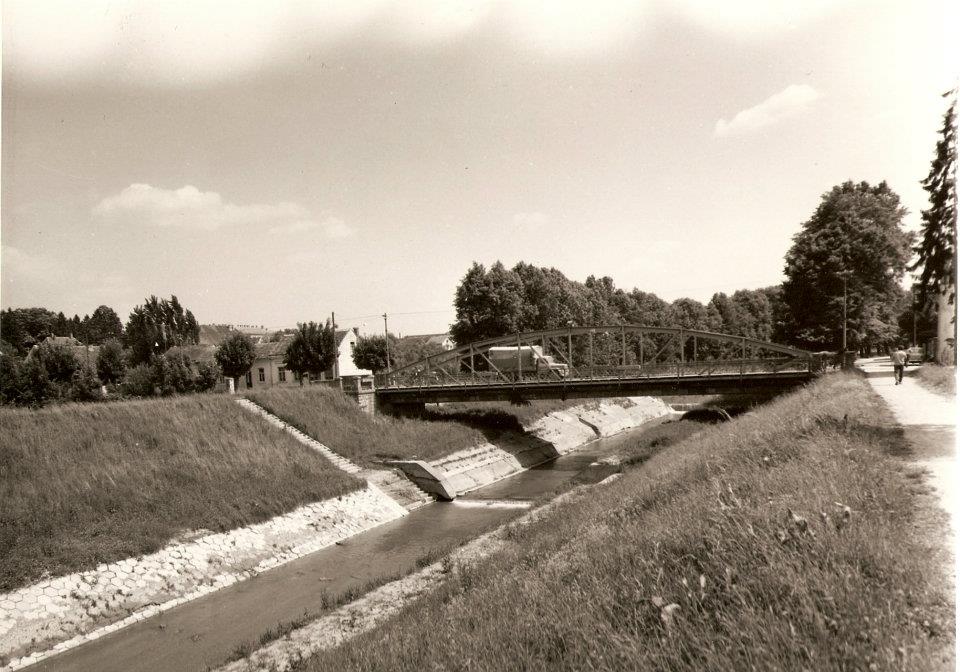
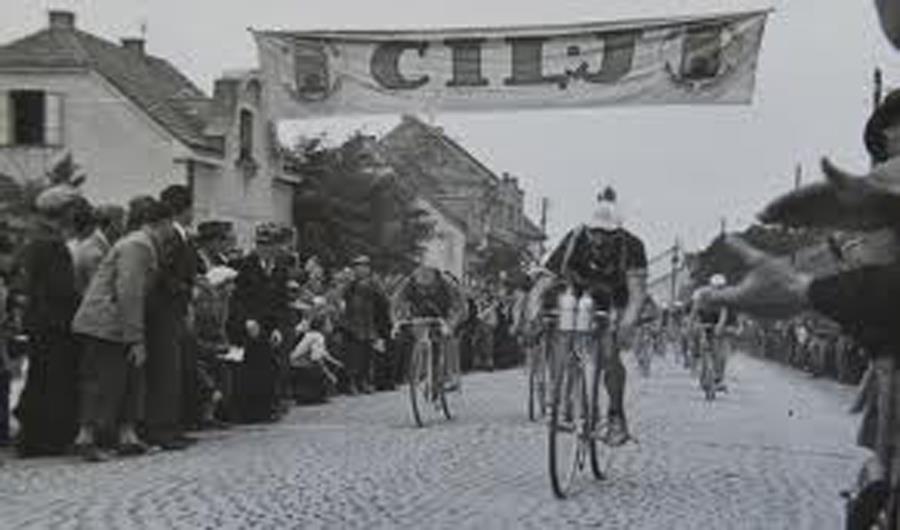
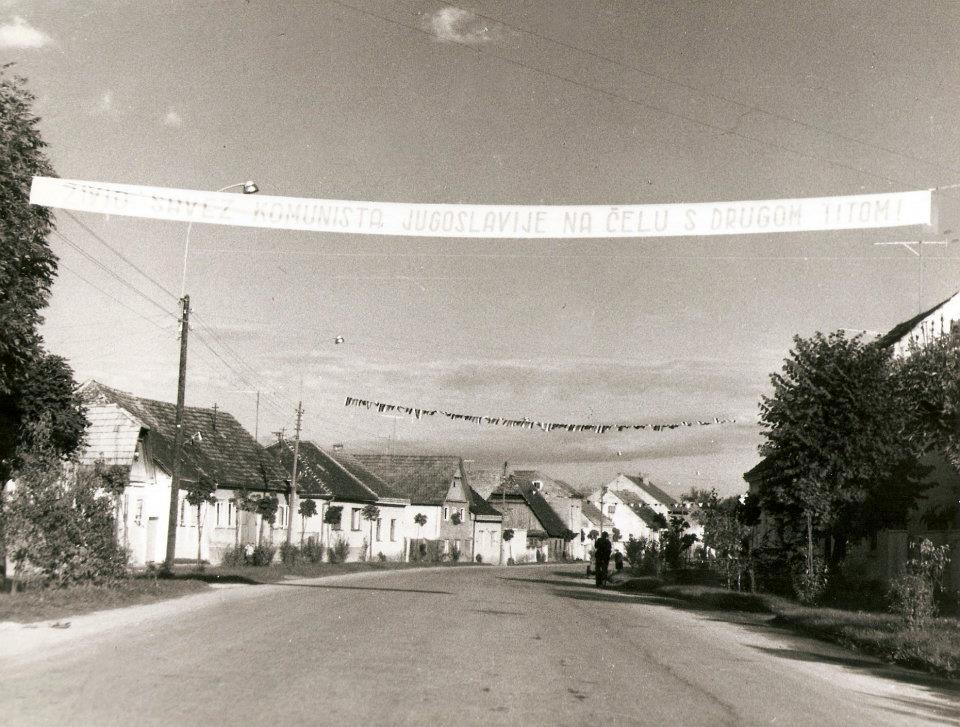
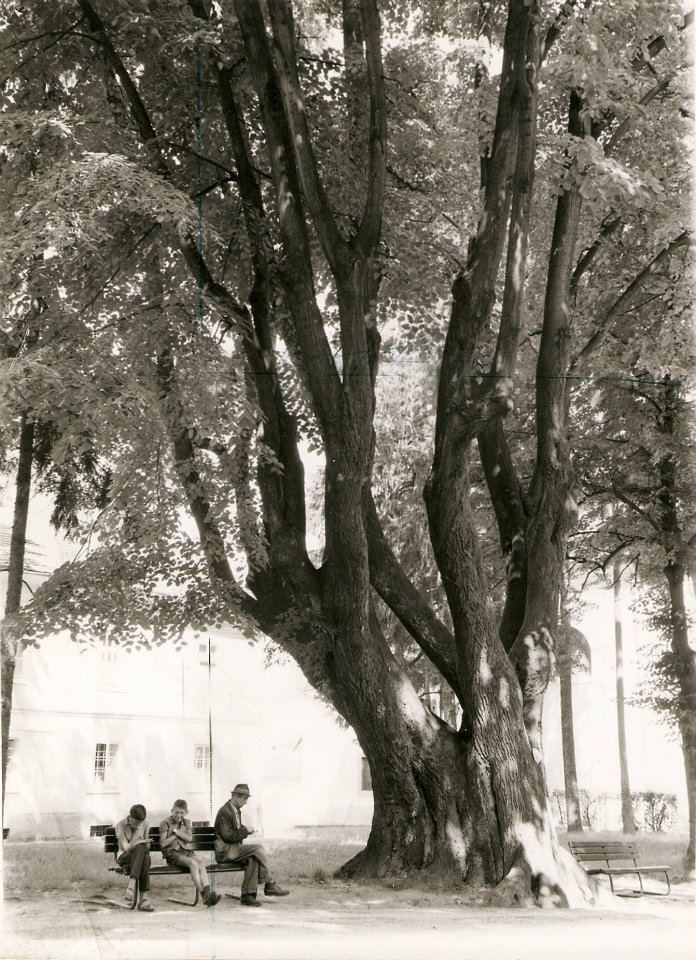
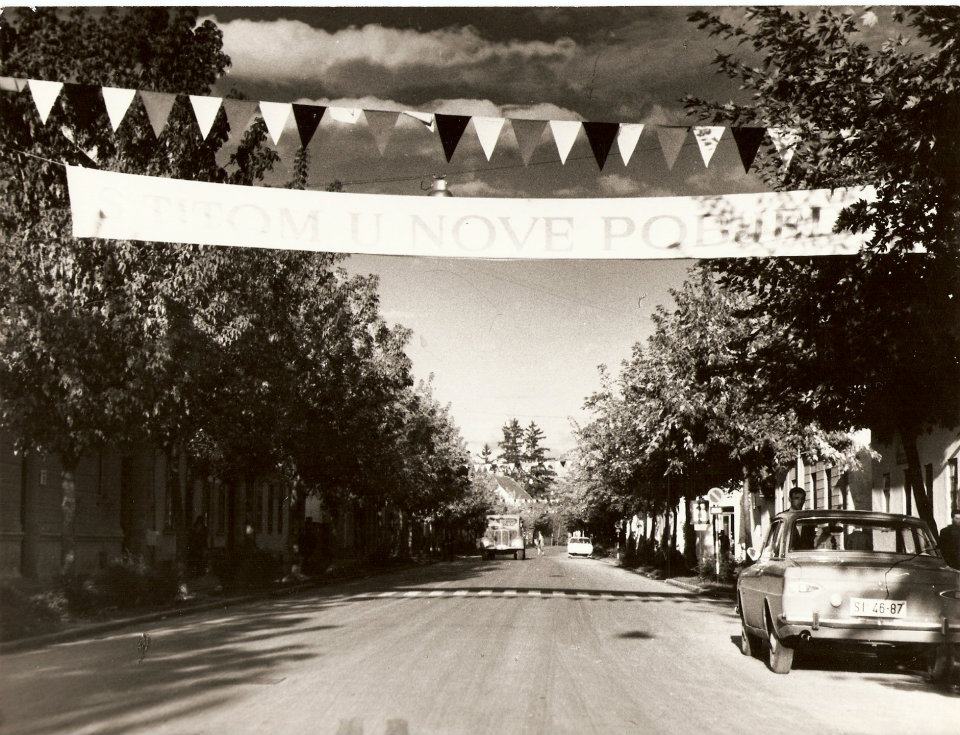
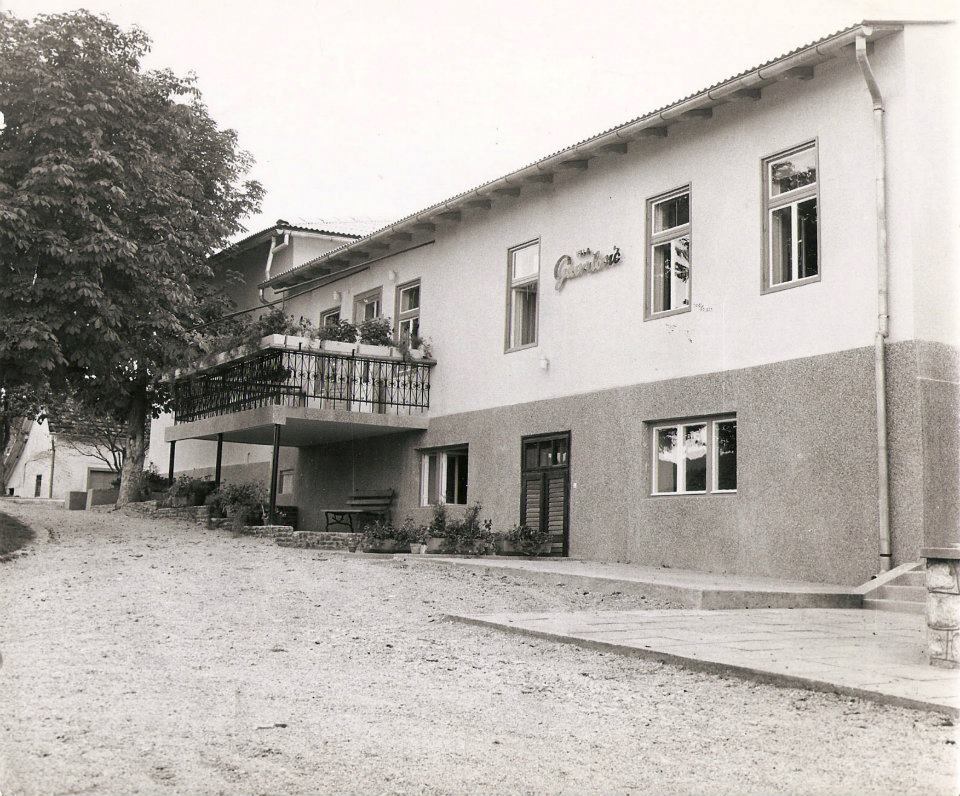
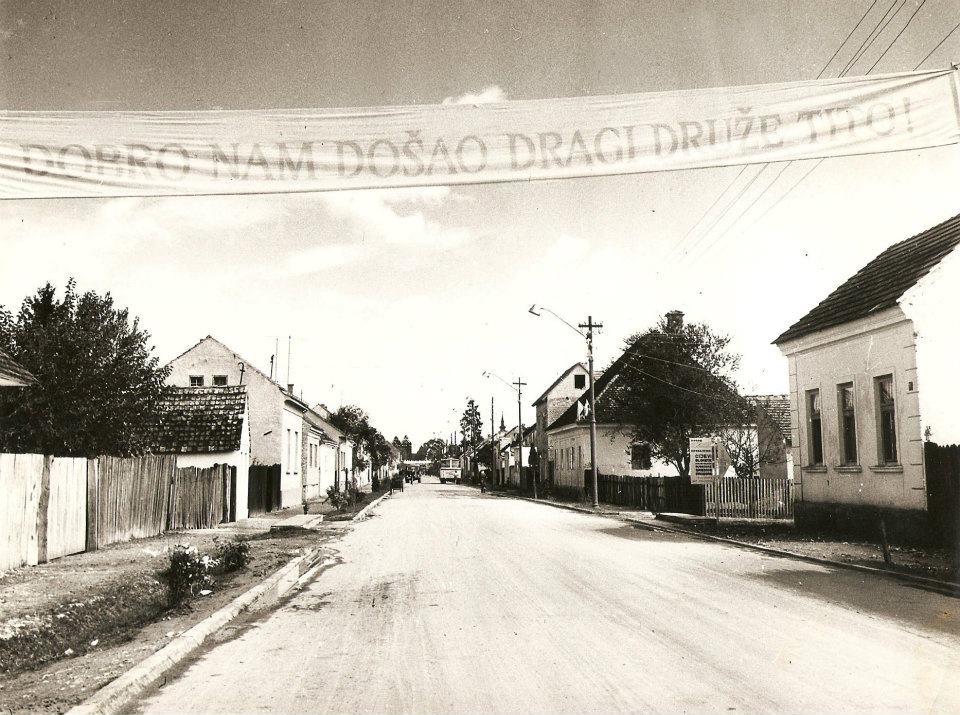
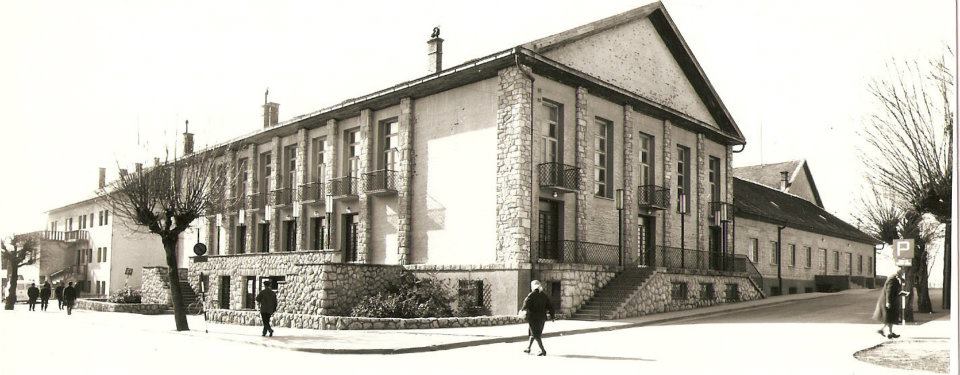
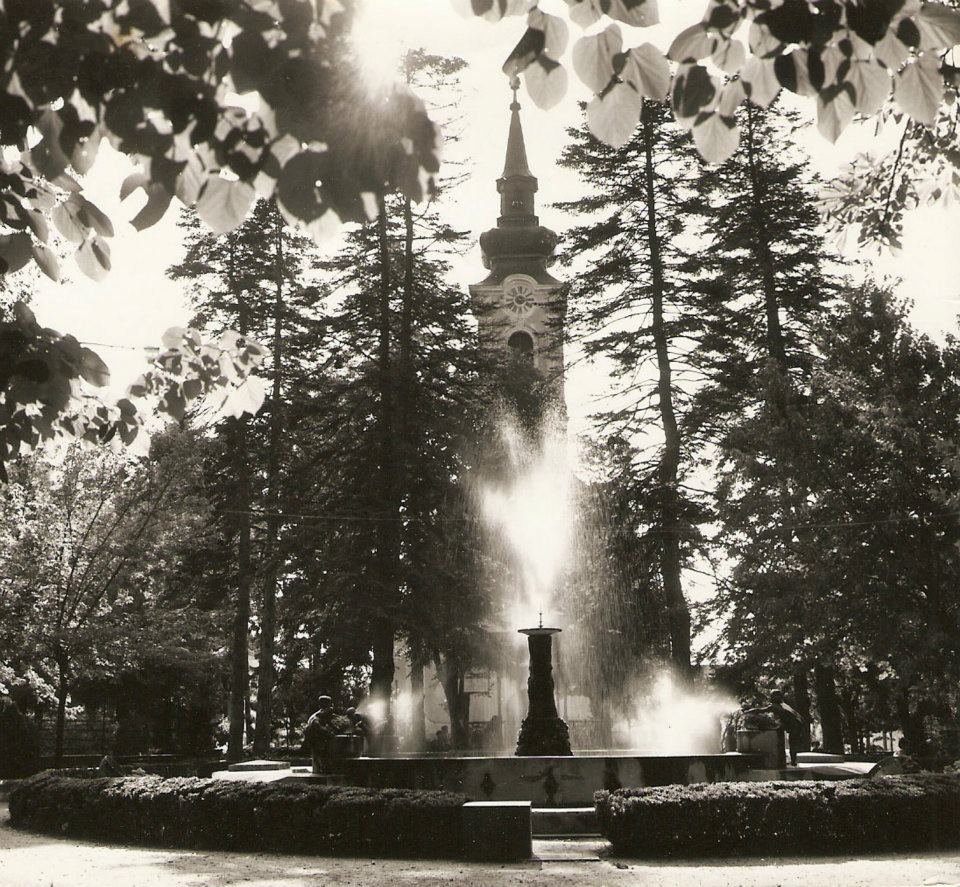
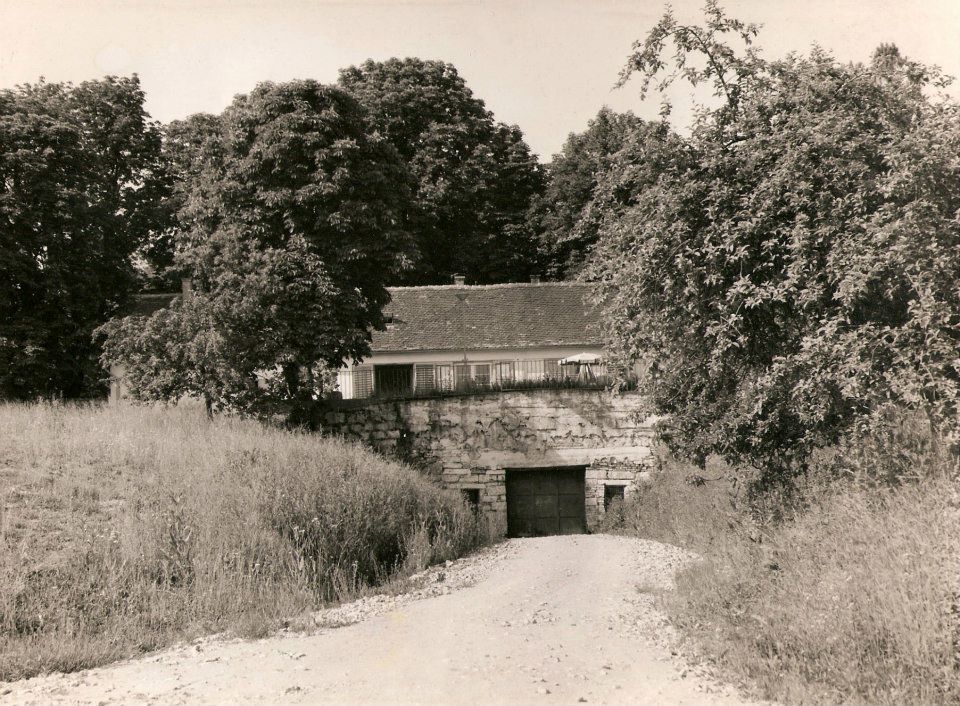
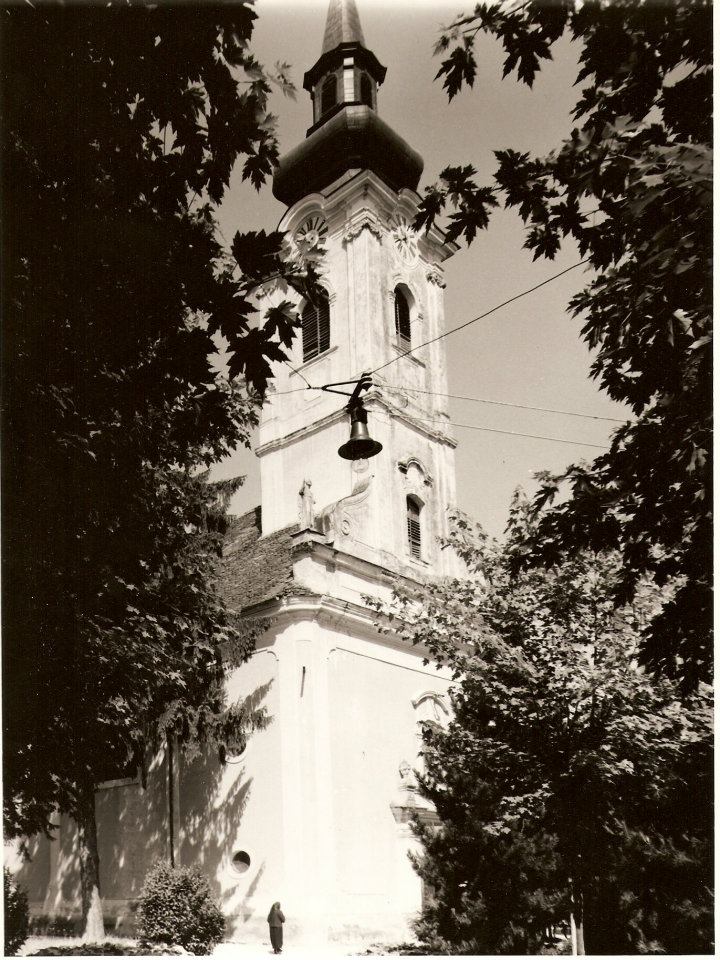
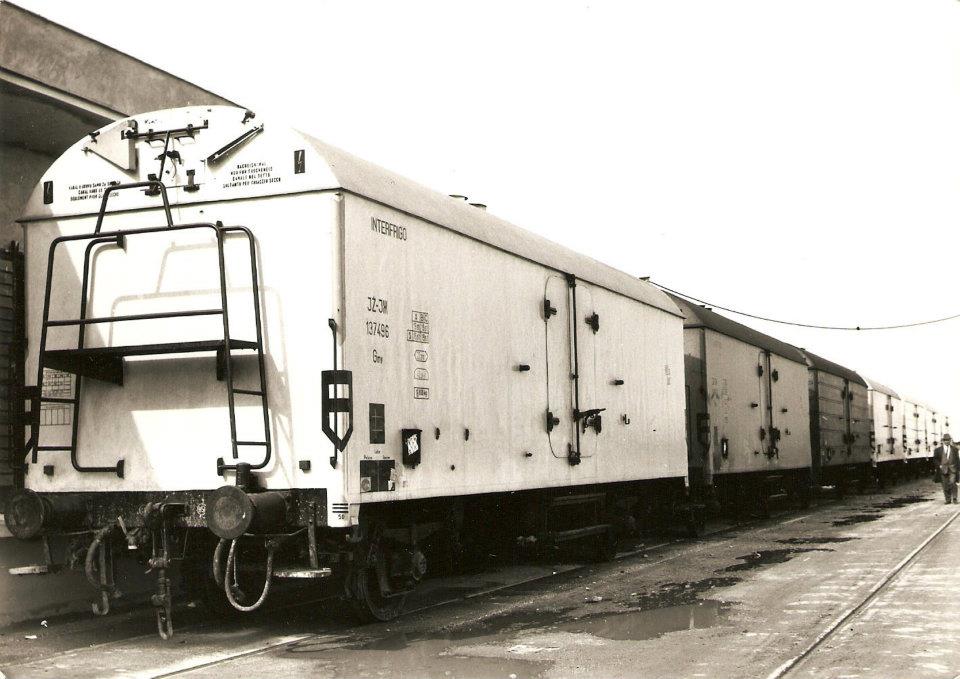
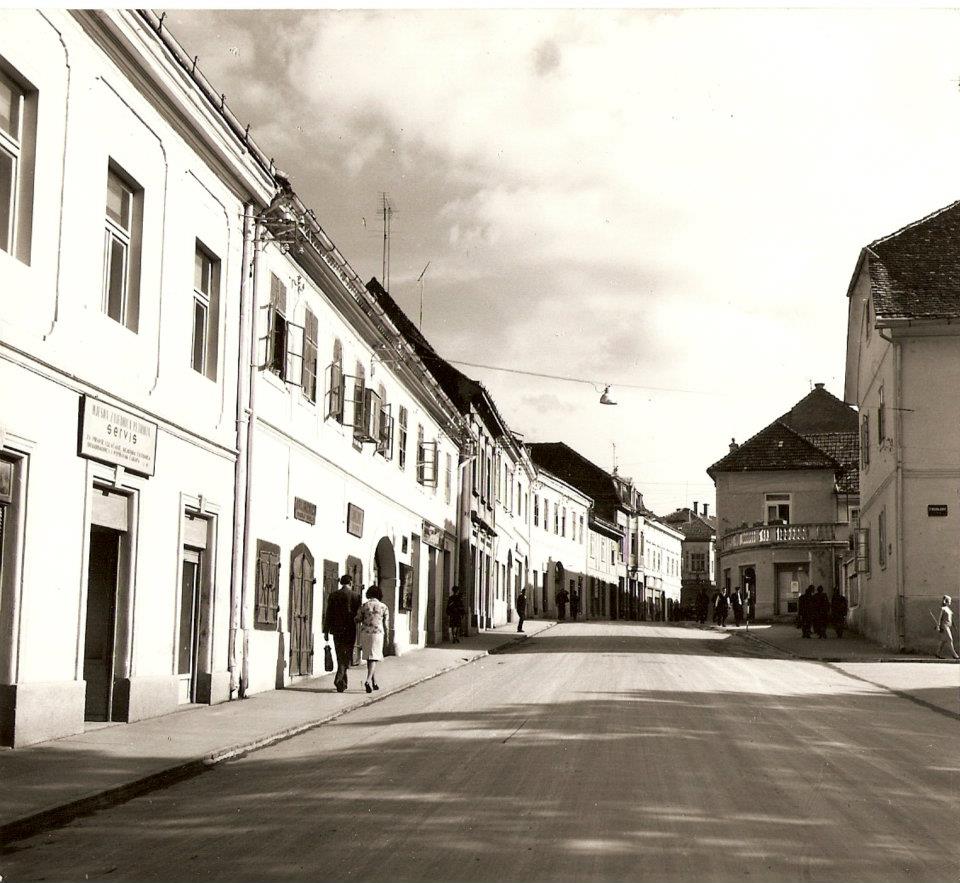
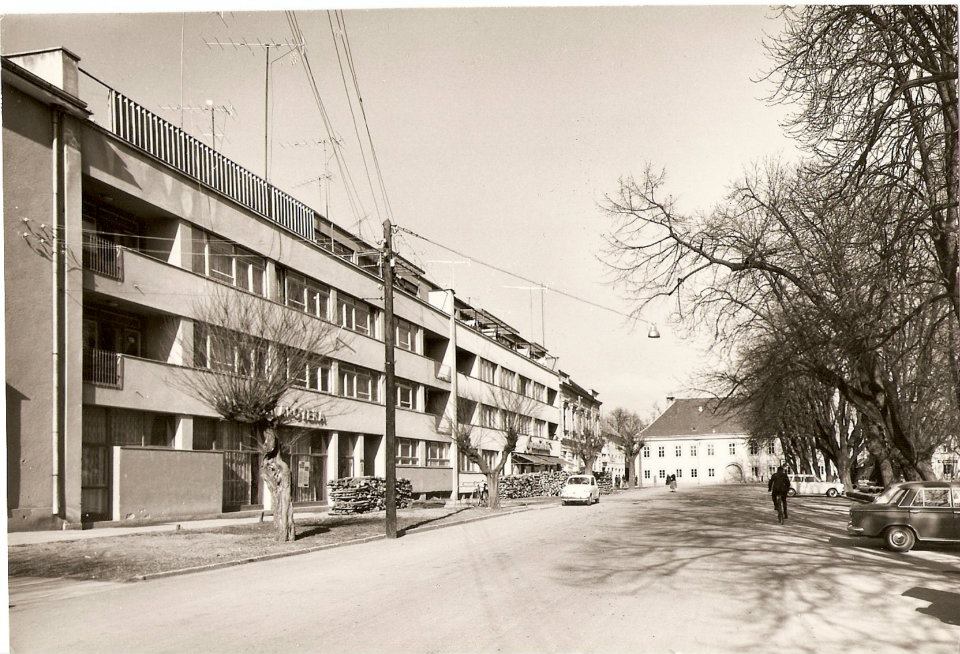
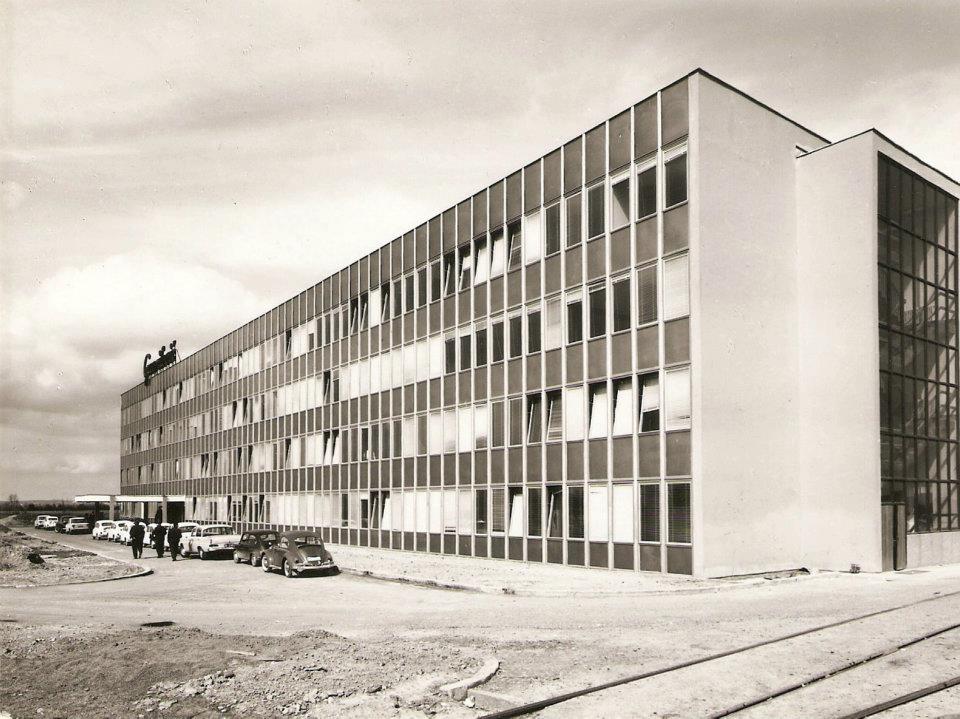
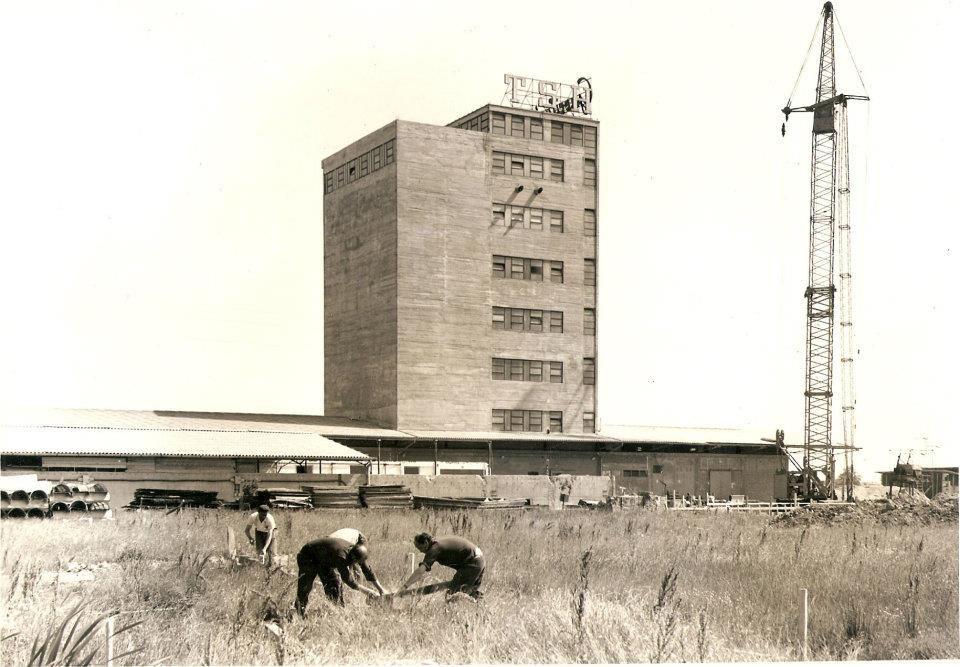
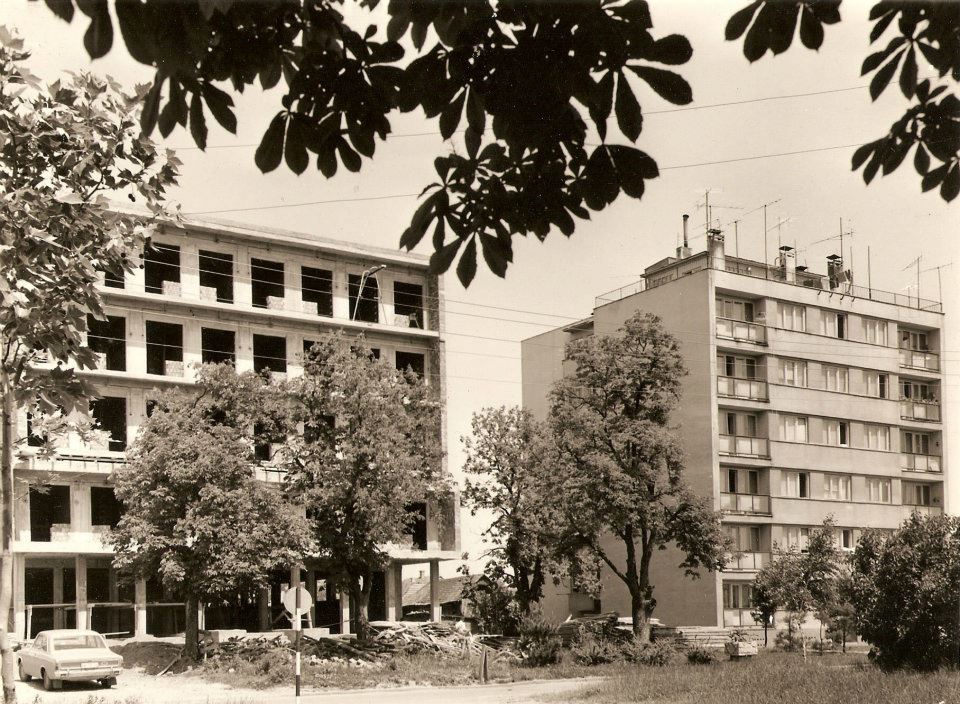
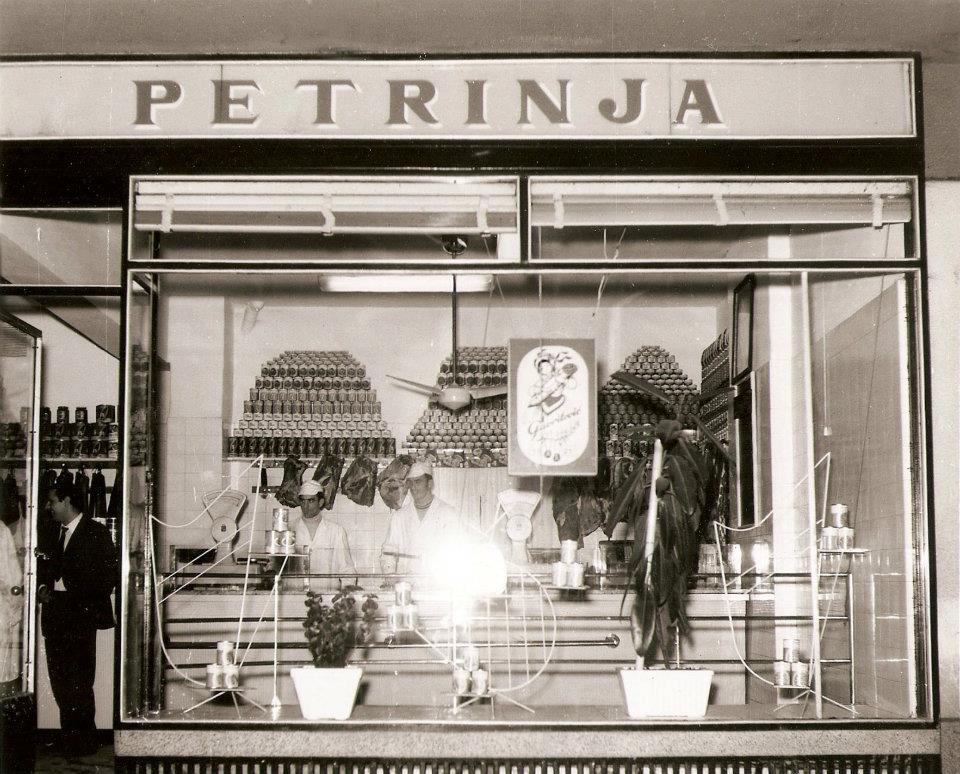
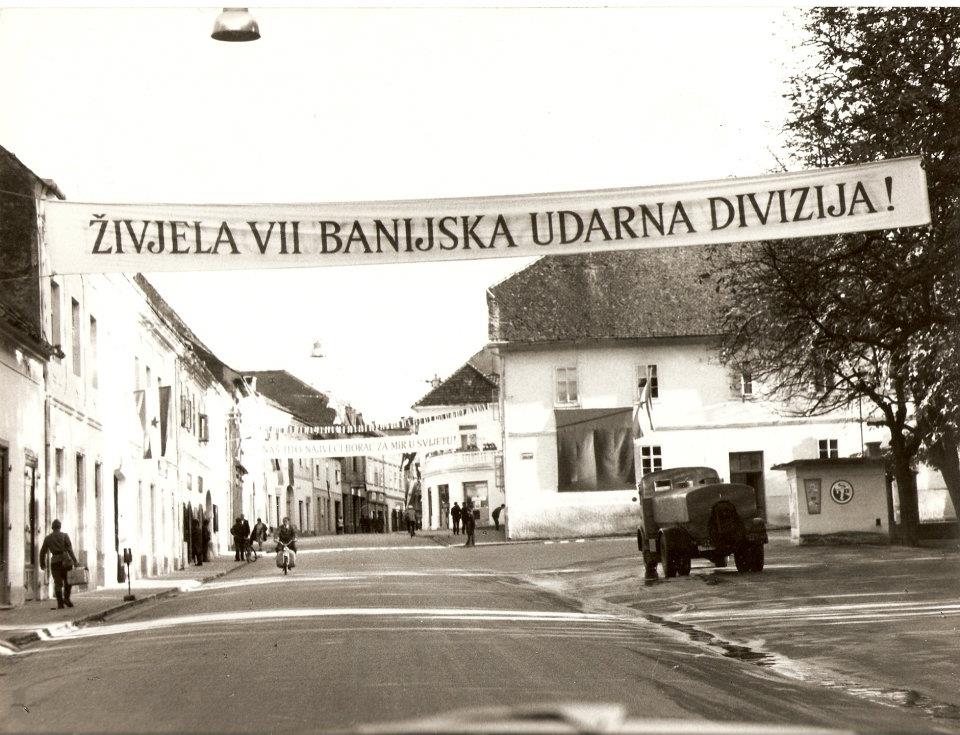
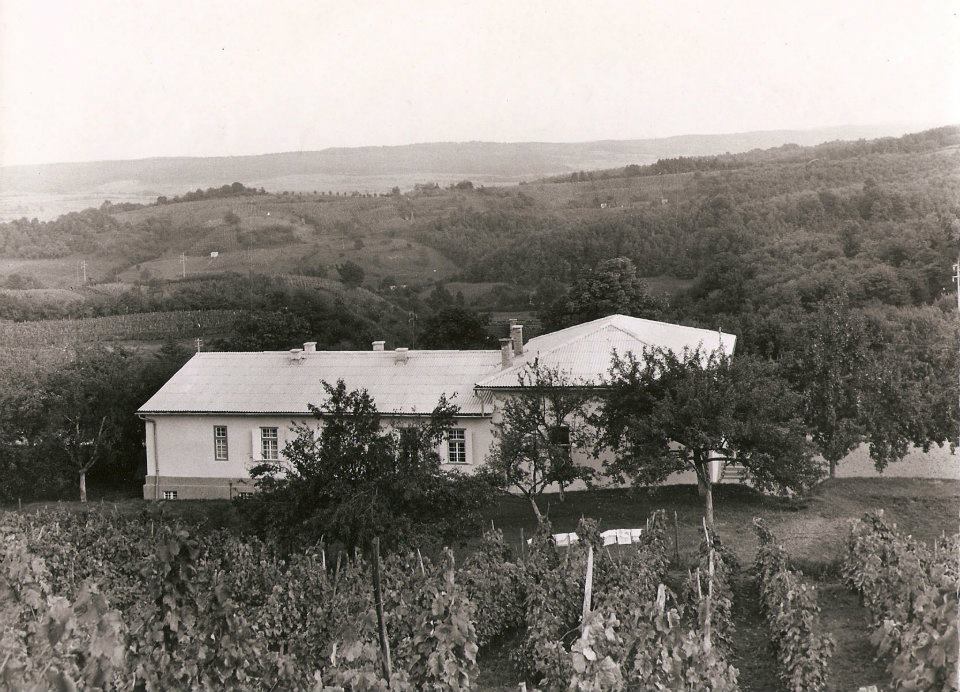
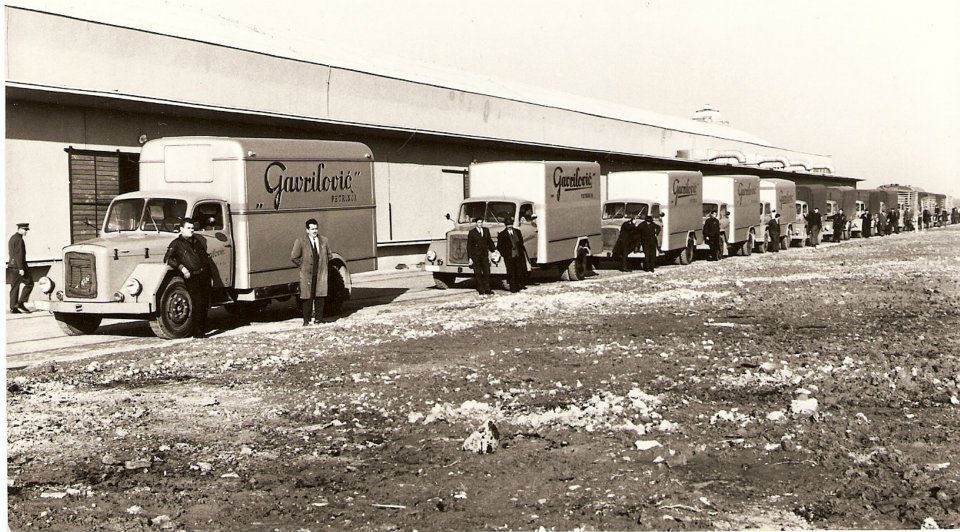
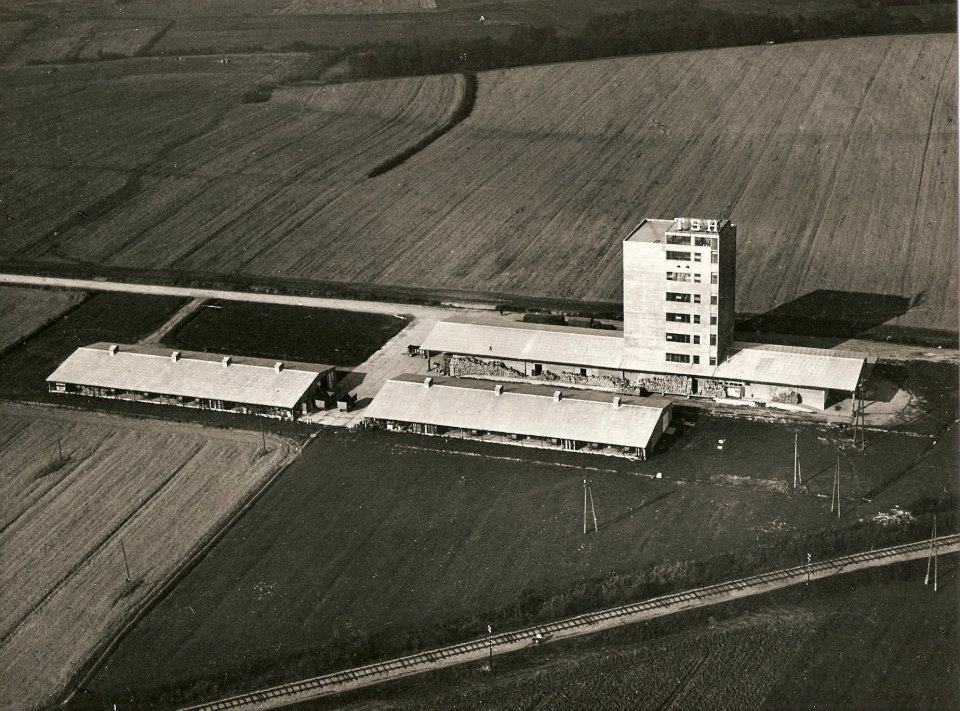
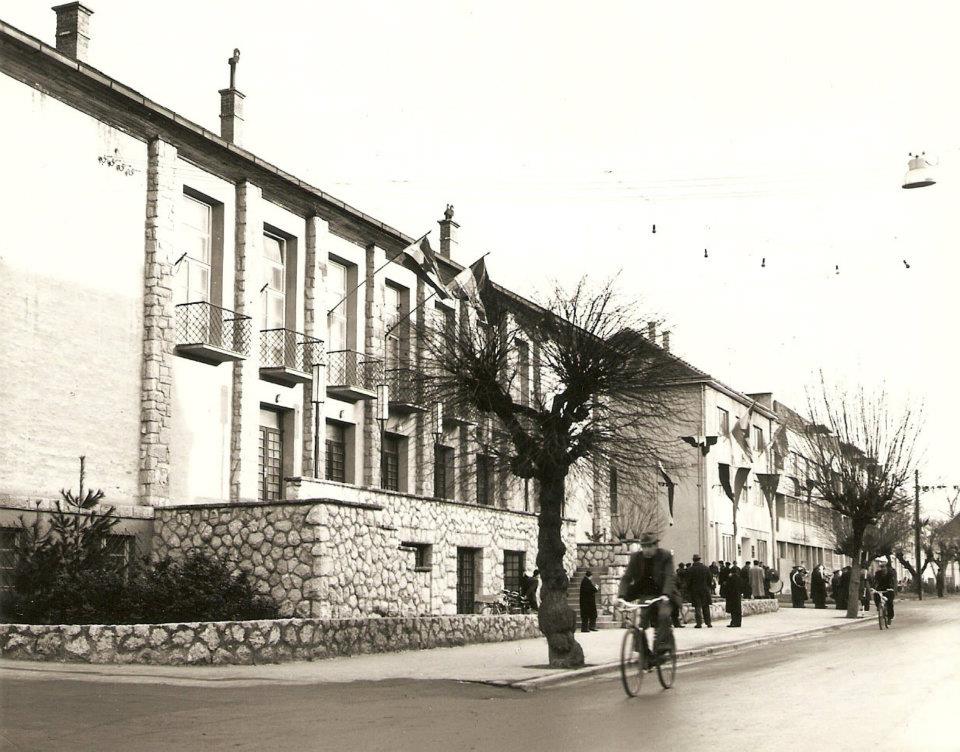
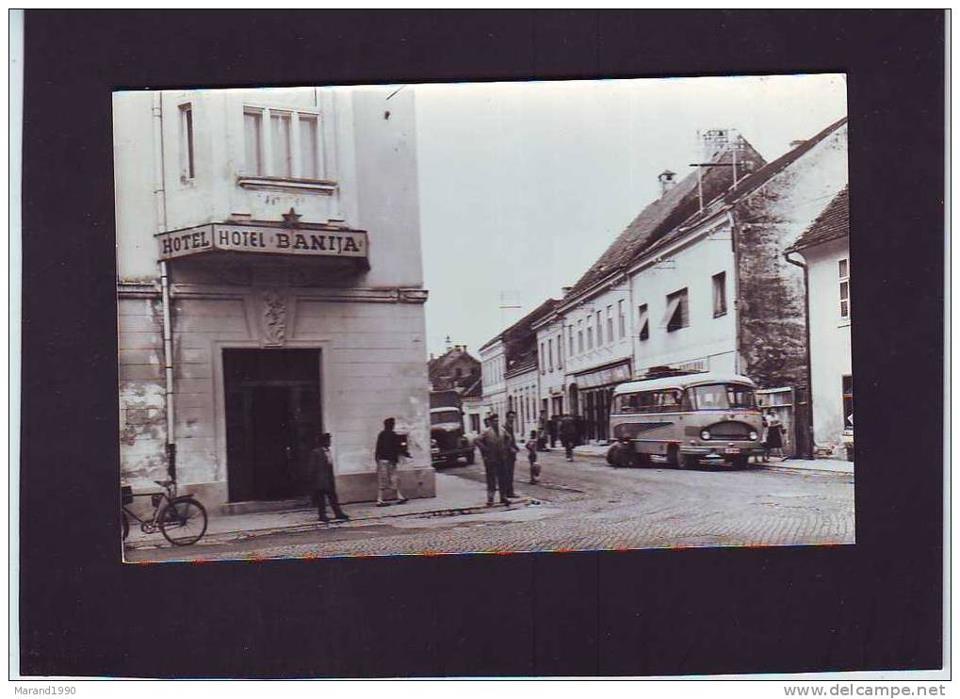
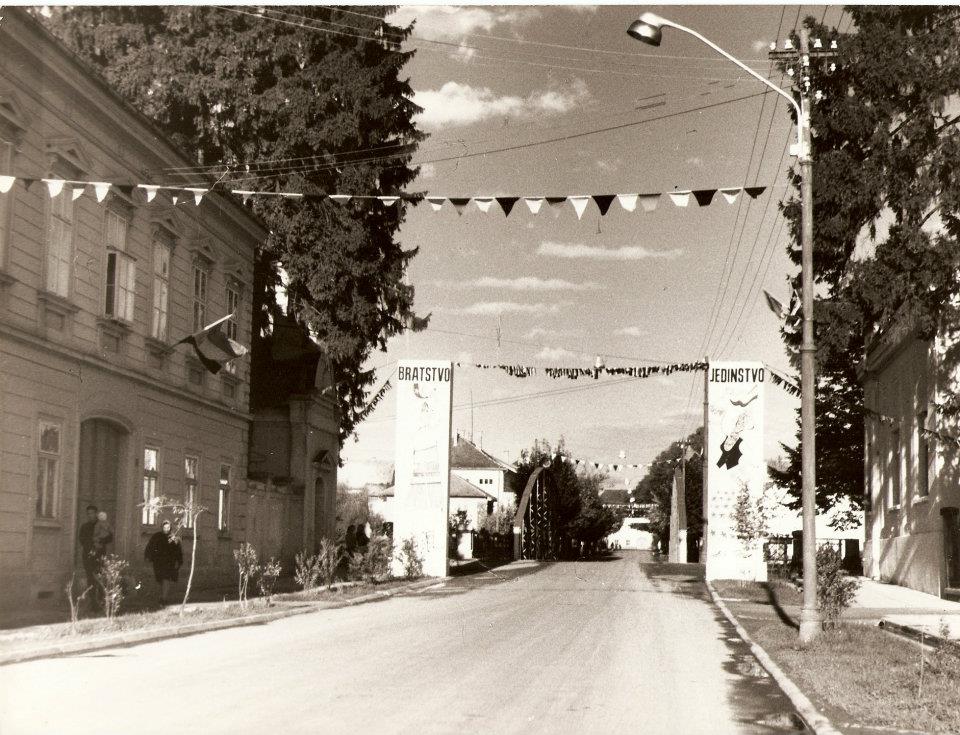
Croatia is renowned for many famous sculptors, not least Ivan Mestrovic, whose works appear all over the world. However, the first sculpture ever produced in Croatia as a public work of art was a statue of 'people's politician' Stjepan Radić, who came from nearby Desno Trebarjevo, Martinska Ves. It was made by Croatian sculptor Mila Wod (1929 in historic Petrinja). It was unveiled in Petrinja in 1936, but removed and vandalised during the 1991-1995 occupation, but found nearby, restored and returned to the centre of Petrinja in1999 in a square now named after Stjepan Radić.
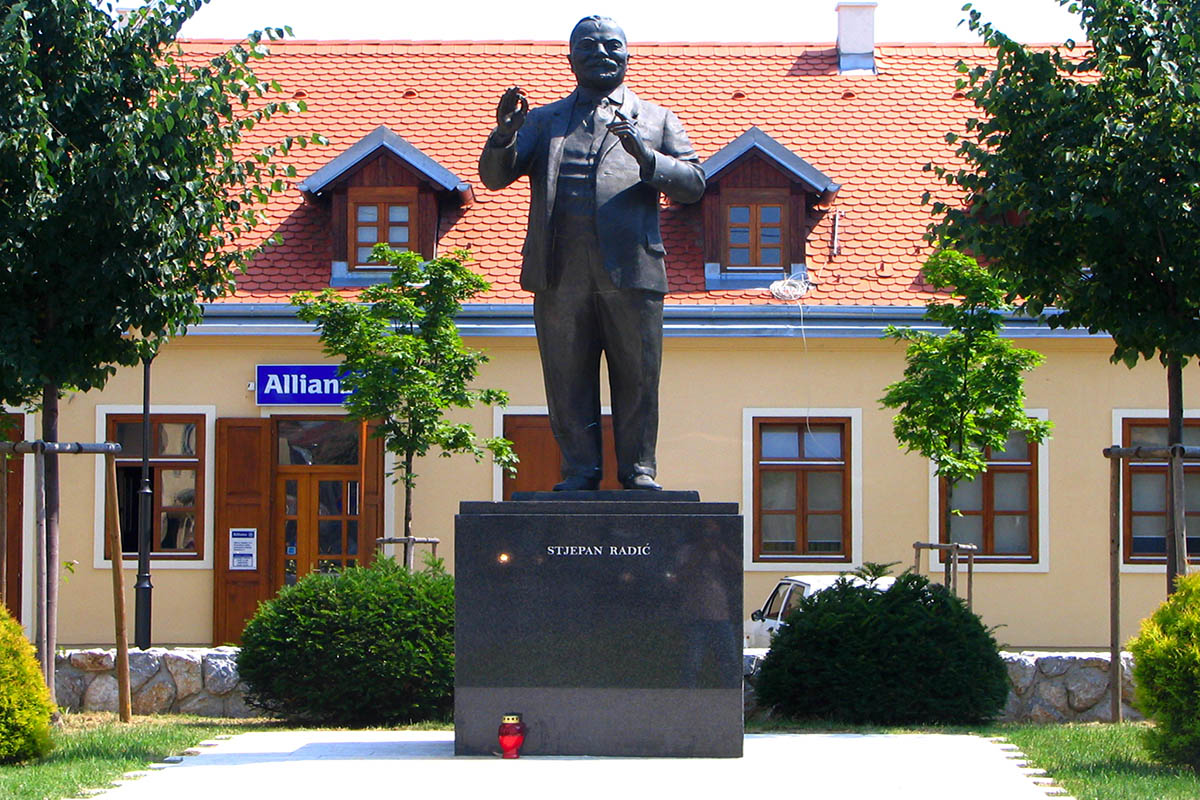 © Tourist Board of Petrinja
© Tourist Board of Petrinja
All photos © Tajanstvena Hrvatska / Public domain unless otherwise identified
First Wooden Ferry ''Bodulka'' Sailed Sixty Years Ago in Croatia
As Morski writes on the 9th of September, 2019, when Bodulka embarked on her first voyage from Šilo to Crikvenica sixty years ago, this ferry was a real treat for Crikvenica and Krk residents. It was not only a spectacular event, but also the beginning of a new era of ferry connections between Croatia's many islands and the mainland.
''Bodulka sailed for the first time on April the 12th at 10:25 from Šilo. It was loaded with one bus, several cars and a large number of islanders travelled those thirty minutes to reach the port of Crikvenica excitedly, where several hundred citizens were standing waiting for them and to witness Bodulka's arrival.
And that is truly a historic moment for Croatian maritime affairs, says Tea Rosić, a curator at the Crikvenica City Museum. She adds that this wooden ferry initially travelled four times a day, but that was not enough.
The story of Bodulka's ''reign'' on the Croatian Adriatic has of course attracted numerous tourists to the aforementioned Crikvenica museum. The crew of HRT's More (Sea) show also spoke with Mladen Dunat - Bodulka's very first helmsman. Private photographs and the uniforms of other members of Bodulka's crew can also be viewed at the exhibition.
The ferry sadly sank in Rovinj's port back in 2009, under her later name - Rovinjka, after maintaining the very first ferry line on the Croatian coast between Crikvenica and Šilo on the island of Krk for fifty long years.
According to Slobodna Dalmacija, the oldest wooden ferry on the Adriatic sea was built back in 1952 at Šibenik's "Velimir Skorpik" naval institute, as a landing ship for the needs of the then Yugoslav Nay (JRM), but its use was soon taken over by military purposes, and in 1959 she was purchased by Kvarnerska plovidba from Rijeka, where she was converted at the shipyard in Punat on the island Krk into ''Bodulka'' - a passenger ferry with a capacity of 130 passengers or twelve vehicles.
The chronicles state that on Sunday, April the 12th, 1959, Bodulka sailed from Šilo to Crikvenica carrying passengers, one bus, three cars and several motorcycles, thus securing her rightful place in Croatia's rich maritime history.
In 1963, Jadrolinija bought Bodulka, and after sixteen years, the ship changed its owner again, and in 1979, under the flag of the Rovinj company Jadranturist, Bodulka became Rovinjka, before sinking in 2009.
Make sure to follow our dedicated lifestyle page for more Croatian history.


